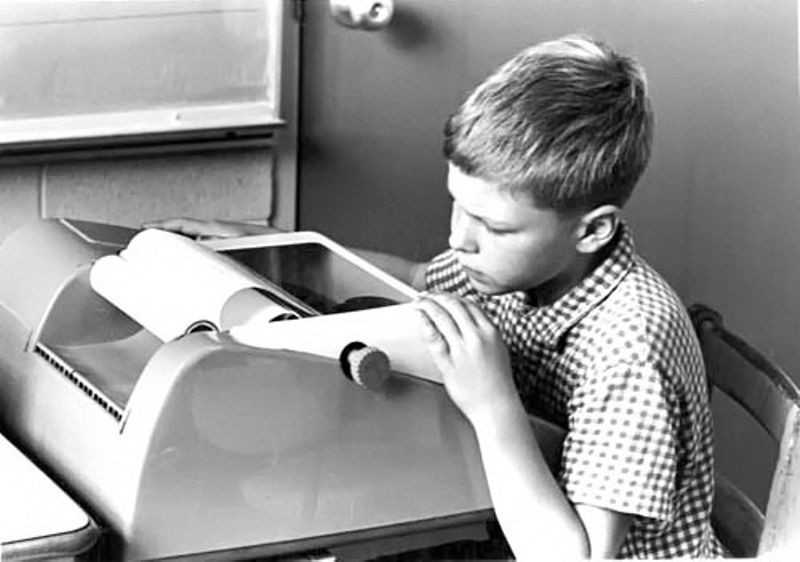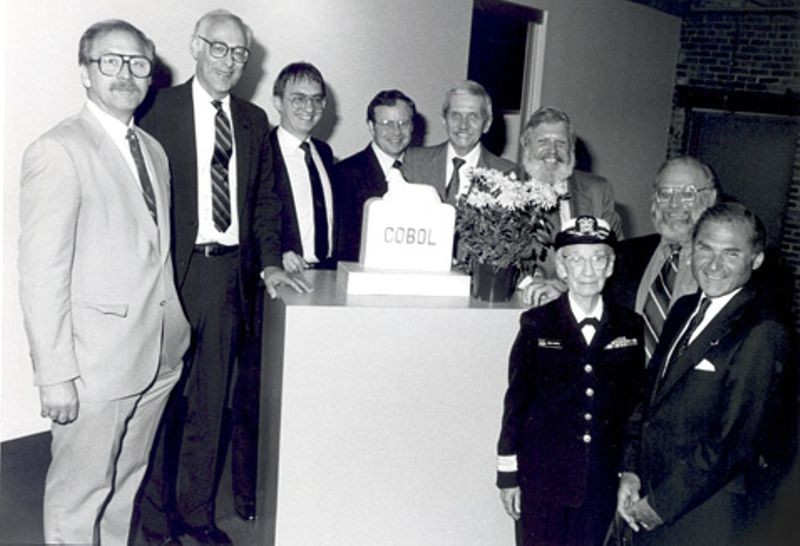
Participants in COBOL’s 25th Anniversary Celebration at The Computer Museum on May 16, 1985, surround the COBOL Tombstone, a gift in 1960 from Howard Bromberg (far right) to the COBOL Committee.”
COBOL (Common Business-Oriented Language)
A team drawn from several computer manufacturers and the Pentagon develop COBOL—an acronym for Common Business-Oriented Language. Many of its specifications borrow heavily from the earlier FLOW-MATIC language. Designed for business use, early COBOL efforts aimed for easy readability of computer programs and as much machine independence as possible. Designers hoped a COBOL program would run on any computer for which a compiler existed with only minimal modifications.
Howard Bromberg, an impatient member of the committee in charge of creating COBOL, had this tombstone made out of fear that the language had no future. However, COBOL survives to this day. A study in 1997 estimated that over 200 billion lines of COBOL code was still in existence, accounting for 80% of all business software code.
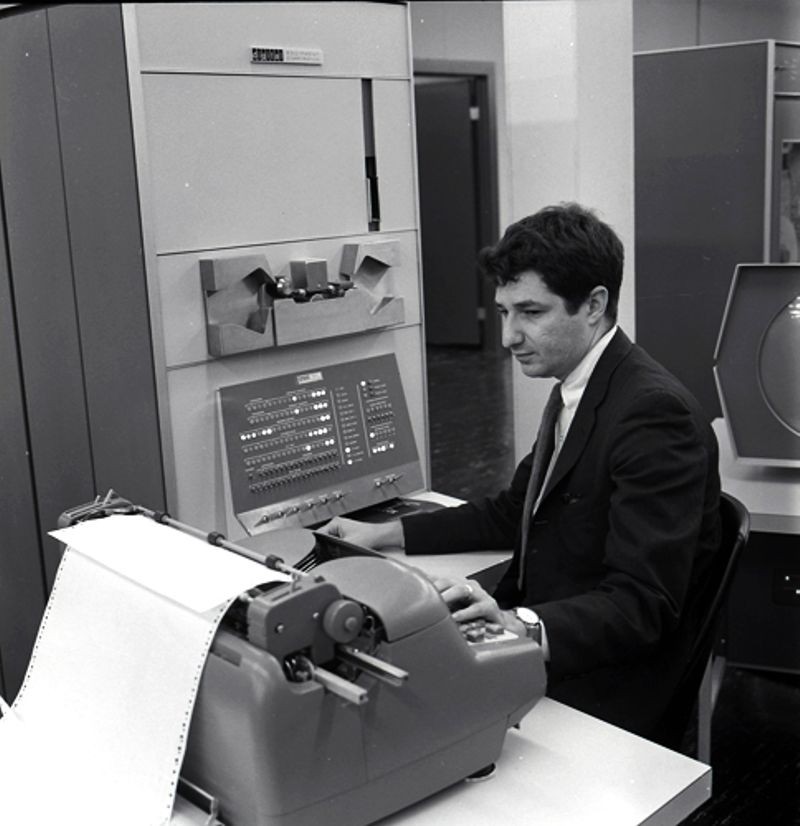
Ed Fredkin at DEC PDP-1
DEC PDP-1 introduced
The typical PDP-1 computer system, which sells for about $120,000, includes a cathode ray tube graphic display, paper tape input/output, needs no air conditioning and requires only one operator; all of which become standards for minicomputers. Its large scope intrigued early hackers at MIT, who wrote the first computerized video game, SpaceWar!, as well as programs to play music. More than 50 PDP-1s were sold.
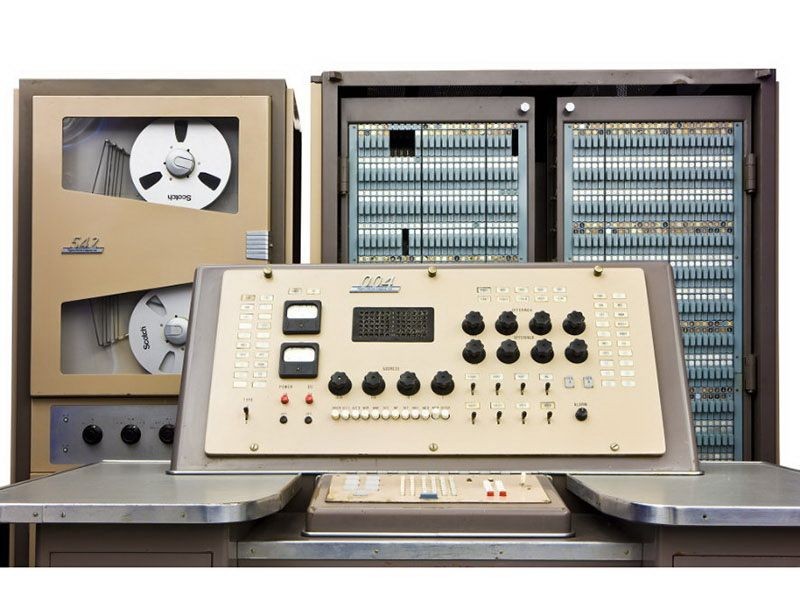
NEAC 2203 transistorized computer
NEAC 2203 goes online
An early transistorized computer, the NEAC (Nippon Electric Automatic Computer) includes a CPU, console, paper tape reader and punch, printer and magnetic tape units. It was sold exclusively in Japan, but could process alphabetic and Japanese kana characters. Only about thirty NEACs were sold. It managed Japan’s first on-line, real-time reservation system for Kinki Nippon Railways in 1960. The last one was decommissioned in 1979.
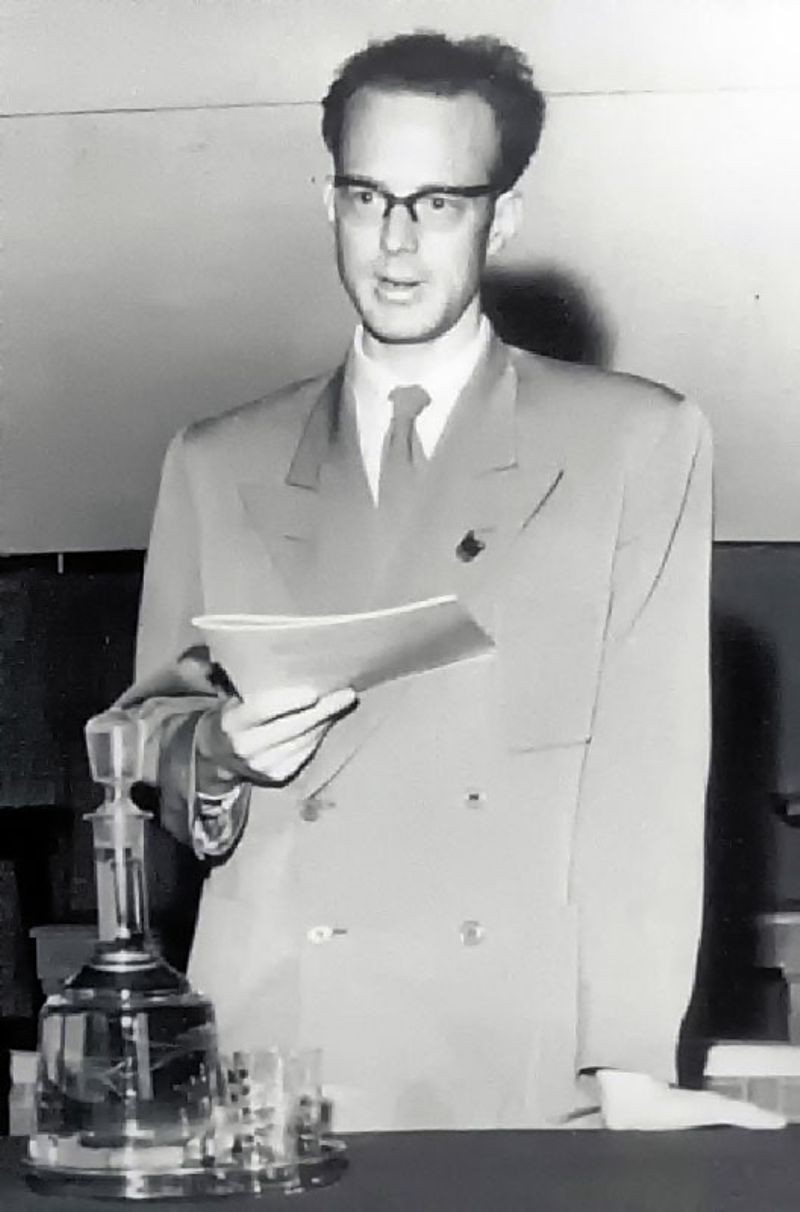
Quicksort developer Tony Hoare
Quicksort algorithm
While studying machine translation of languages in Moscow, C. A. R. Hoare develops Quicksort, an algorithm that would become one of the most used sorting methods in the world. Later, Hoare went to work for the British computer company Elliott Brothers, where he designed the first commercial Algol 60 compiler. Queen Elizabeth II knighted C.A.R. Hoare in 2000.
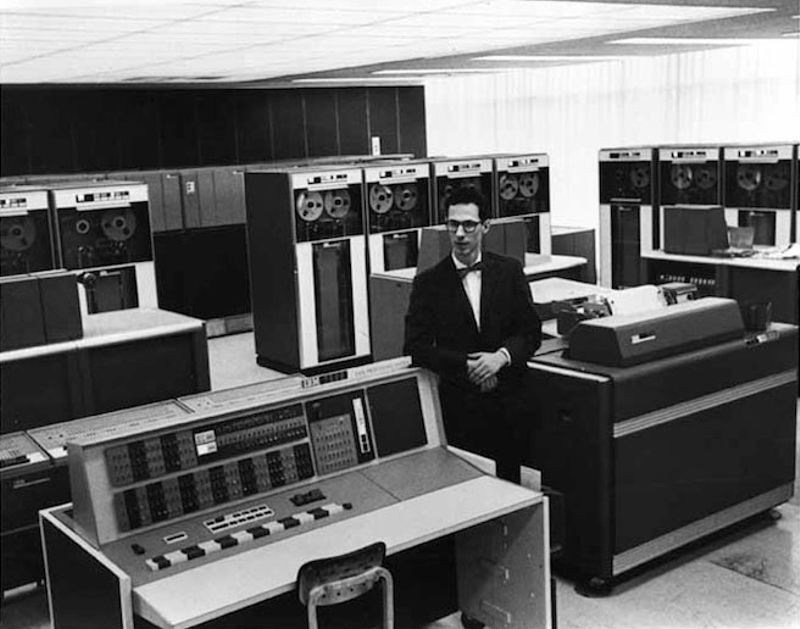
Fernando Corbató with MIT’s IBM 7090
MIT Museum
Compatible Time-Sharing System (CTSS) is Demonstrated
The increasing number of users needing access to computers in the early 1960s leads to experiments in timesharing computer systems. Timesharing systems can support many users – sometimes hundreds – by sharing the computer with each user. CTSS was developed by the MIT Computation Center under the direction of Fernando Corbató and was based on a modified IBM 7090, then later 7094, mainframe computer. Programs created for CTSS included RUNOFF, an early text formatting utility, and an early inter-user messaging system that presaged email. CTSS operated until 1973.
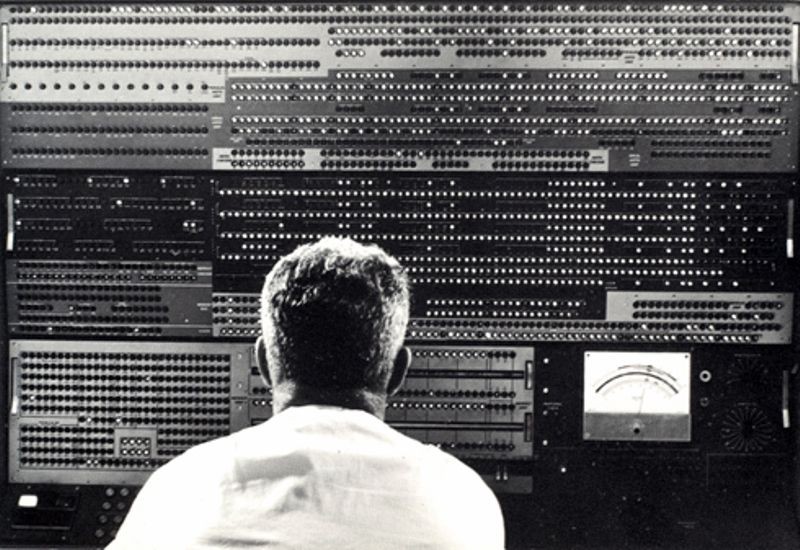
IBM Stretch
IBM 7030 (“Stretch”) completed
IBM´s 7000 series of mainframe computers are the company´s first to use transistors. At the top of the line was the Model 7030, also known as “Stretch.” Nine of the computers, which featured dozens of advanced design innovations, were sold, mainly to national laboratories and major scientific users. A special version, known as HARVEST, was developed for the US National Security Agency (NSA). The knowledge and technologies developed for the Stretch project played a major role in the design, management, and manufacture of the later IBM System/360–the most successful computer family in IBM history.
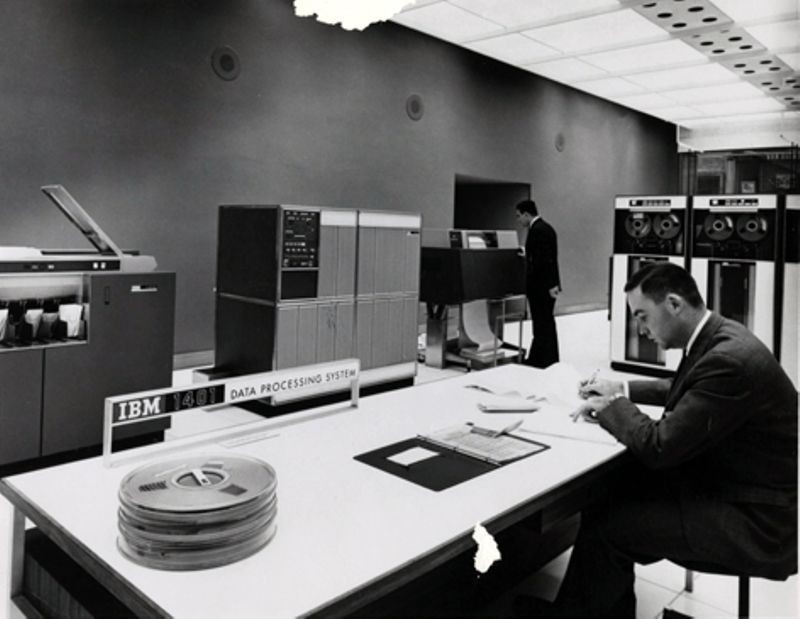
IBM 1401
IBM Introduces 1400 series
The 1401 mainframe, the first in the series, replaces earlier vacuum tube technology with smaller, more reliable transistors. Demand called for more than 12,000 of the 1401 computers, and the machine´s success made a strong case for using general-purpose computers rather than specialized systems. By the mid-1960s, nearly half of all computers in the world were IBM 1401s.
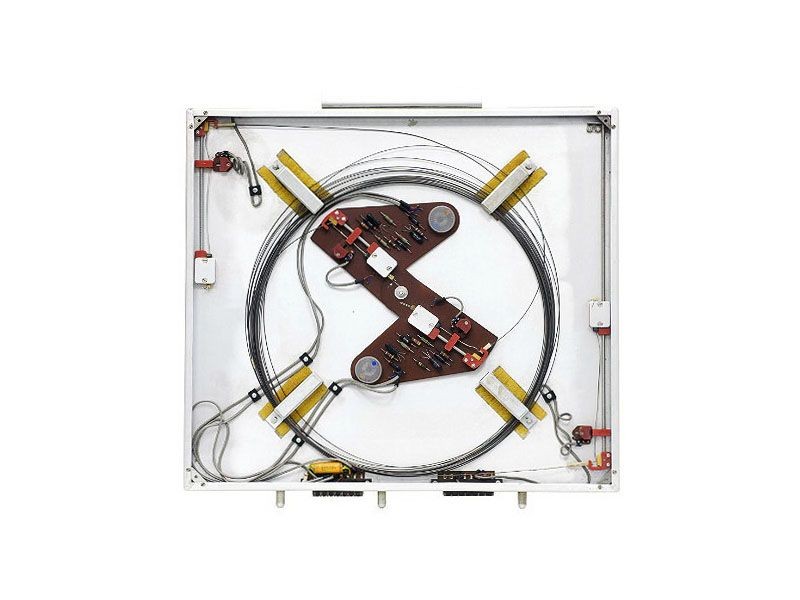
Ferranti Sirius magnetostrictive delay line
Magnetostrictive delay lines
The Ferranti Sirius is announced. The Sirius was a small, low-cost business computer using a simple programming language. Its main memory was a magnetostrictive delay line. The medium here was a thin strip of special metal rolled into a coil, with transducers at either end. Like all delay lines, bits were fed into one end, detected at the other, and continuously recirculated. Although this type of delay line was considered to be somewhat slow, its low cost made it attractive to computer designers.
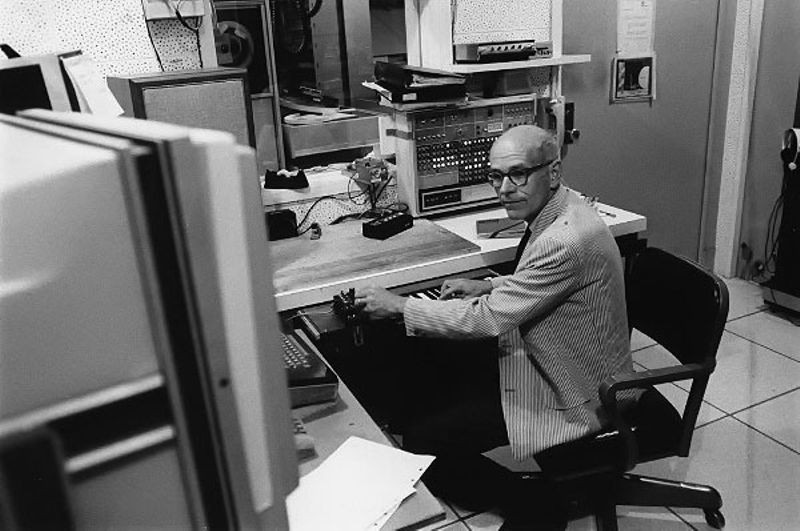
Max Mathews at Bell Labs
Max Mathews and Joan Miller use MUSIC IV to create Daisy Bell
Throughout the 1950s and early ’60s, Bell Labs was one of the centers for computer research in graphics and music. Bell Labs had developed a speech synthesis system for their IBM 704 mainframe computer. John Kelly and Carol Lochbaum programmed the vocals, while Max Mathews programmed the accompaniment. One of the attendees at the first demonstration was author Arthur C. Clarke, who recommended it to director Stanley Kubrick for his film version of the book 2001: A Space Odyssey.
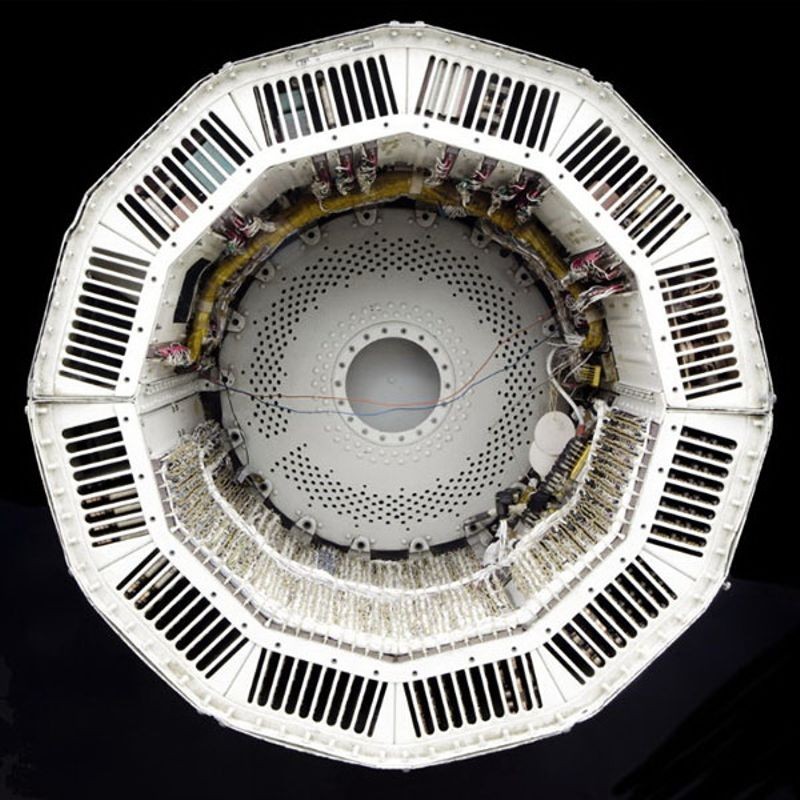
Minuteman Guidance computer
Minuteman I missile guidance computer developed
Minuteman missiles use transistorized computers to continuously calculate their position in flight. The computer had to be rugged and fast, with advanced circuit design and reliable packaging able to withstand the forces of a missile launch. The military’s high standards for its transistors pushed manufacturers to improve quality control. When the Minuteman I was decommissioned, some universities received these computers for use by students.

Naval Tactical Data System (NTDS)
Naval Tactical Data System introduced
The US Navy Tactical Data System uses computers to integrate and display shipboard radar, sonar and communications data. This real-time information system began operating in the early 1960s. In October 1961, the Navy tested the NTDS on the USS Oriskany carrier and the USS King and USS Mahan frigates. After being successfully used for decades, NTDS was phased out in favor of the newer AEGIS system in the 1980s.
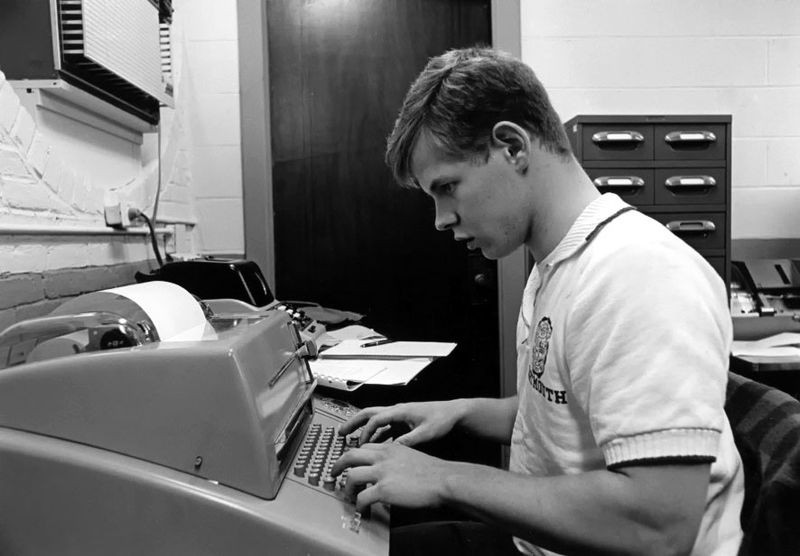
User on the Dartmouth Time-sharing system
Timesharing – the first online communities
By the early 1960s many people can share a single computer, using terminals (often repurposed teleprinters) to log in over phone lines. These timesharing computers are like central hubs with spokes radiating to individual users. Although the computers generally can’t connect to each other, these are the first common multi-user systems, with dozens of people online at the same time. As a result, timesharing pioneers many features of later networks, from file sharing to e-mail and chat. Typical 1960s users are a mix of business people, bank employees, students and researchers, and military personnel.
Some of the first general time-sharing systems are CTSS at MIT, and PLATO II at the University of Illinois.

UNIMATE robot in an industrial setting
UNIMATE
UNIMATE, the first mass-produced industrial robot, begins work at General Motors. Obeying step-by-step commands stored on a magnetic drum, the 4,000-pound robot arm sequenced and stacked hot pieces of die-cast metal. UNIMATE was the brainchild of Joe Engelberger and George Devol, and originally automated the manufacture of TV picture tubes.

Tom Kilburn (standing) and colleagues at the Ferranti Mark I computer
Atlas computer
The concept of virtual memory emerges from a team under the direction of Tom Kilburn at the University of Manchester on its Atlas computer. Virtual memory permitted a computer to use its storage capacity to switch rapidly among multiple programs or users and was a key requirement for timesharing.
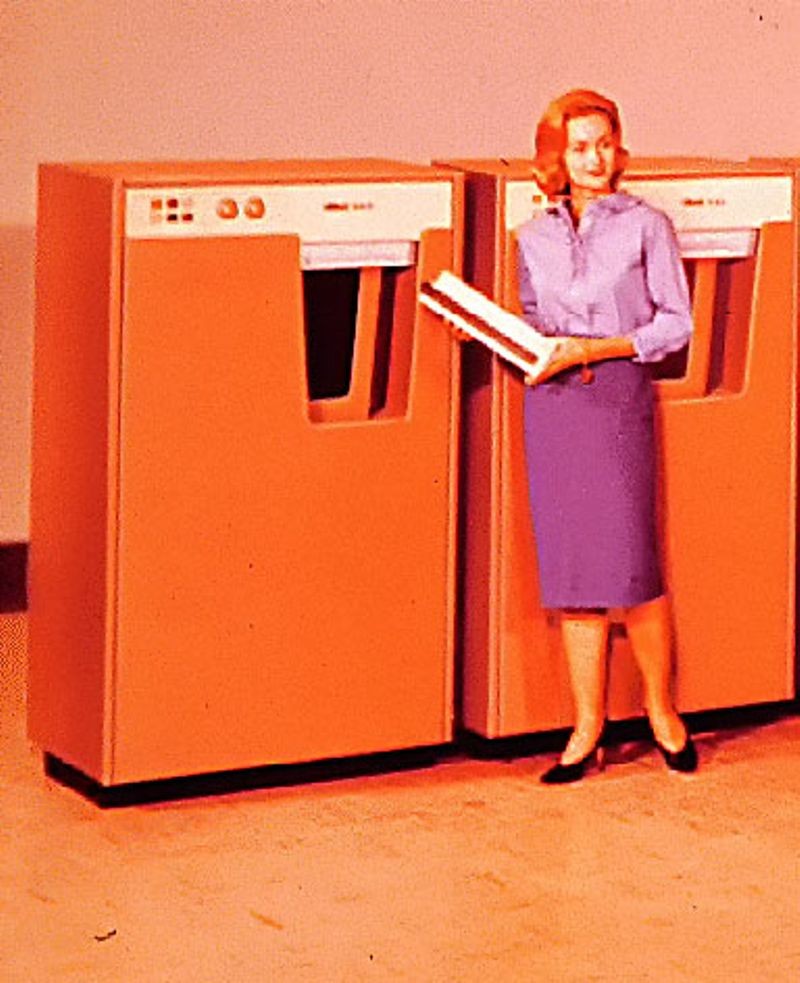
Woman holding deck of CRAM
Card Random Access Memory (CRAM)
Card Random Access Memory (CRAM) is introduced. The NCR 315 and several later NCR mainframes used this mechanically complex magnetic CRAM for secondary storage. The mylar cards were suspended from rods that selected and dropped one at a time for processing. Each CRAM deck of 256 cards recorded about 5.5 MB.
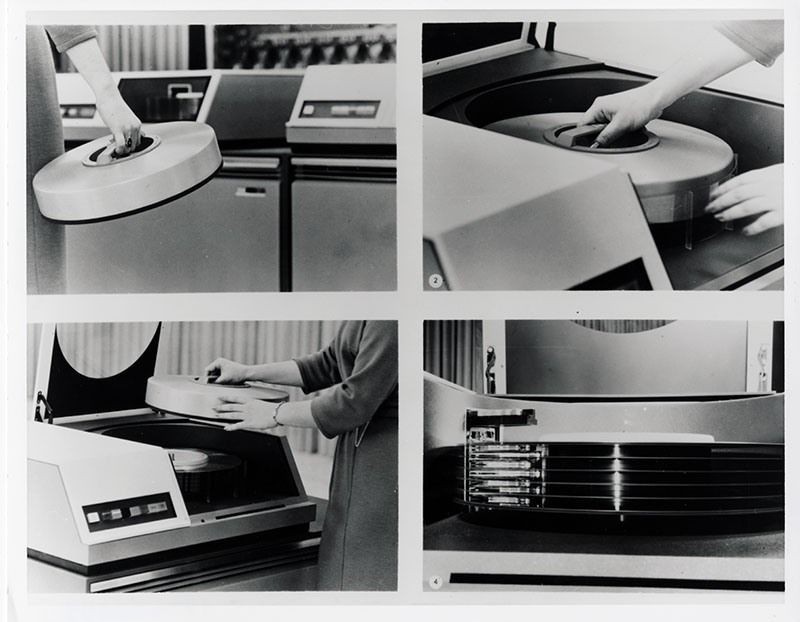
The IBM 1311 Disk Storage Drive
IBM 1311 Disk Storage Drive
IBM 1311 Disk Storage Drive is announced. Announced on October 11, 1962, the IBM 1311 was the first disk drive IBM made with a removable disk pack. Each pack weighed about ten pounds, held six disks, and had a capacity of 2 million characters. The disks rotated at 1,500 RPM and were accessed by a hydraulic actuator with one head per disk. The 1311 offered some of the advantages of both tapes and disks.
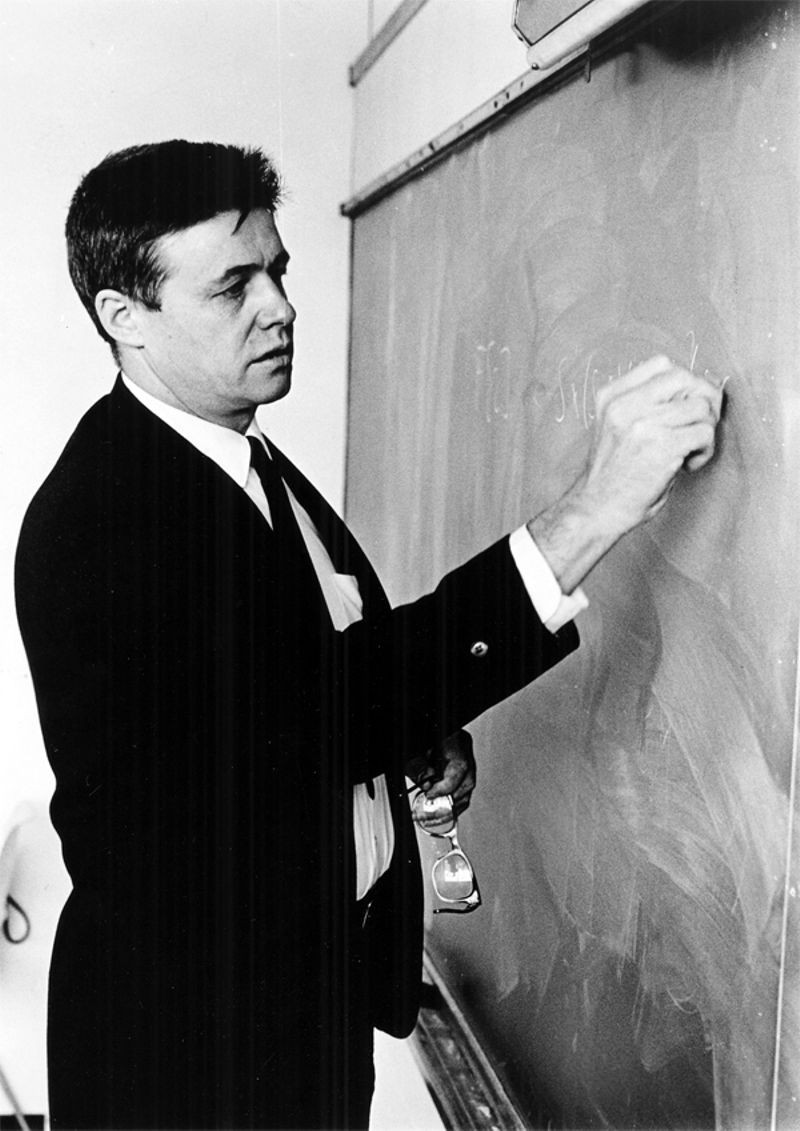
Kenneth Iverson, the developer of APL
Kenneth Iverson writes A Programming Language
Kenneth Iverson’s book A Programming Language details a form of mathematical notation that he had developed in the late 1950s while an assistant professor at Harvard University. IBM hired Iverson and it was there that APL evolved into a practical programming language. APL was widely used in scientific, financial, and especially actuarial applications. Powerful functions and operators in APL are expressed with special characters, resulting in very concise programs.
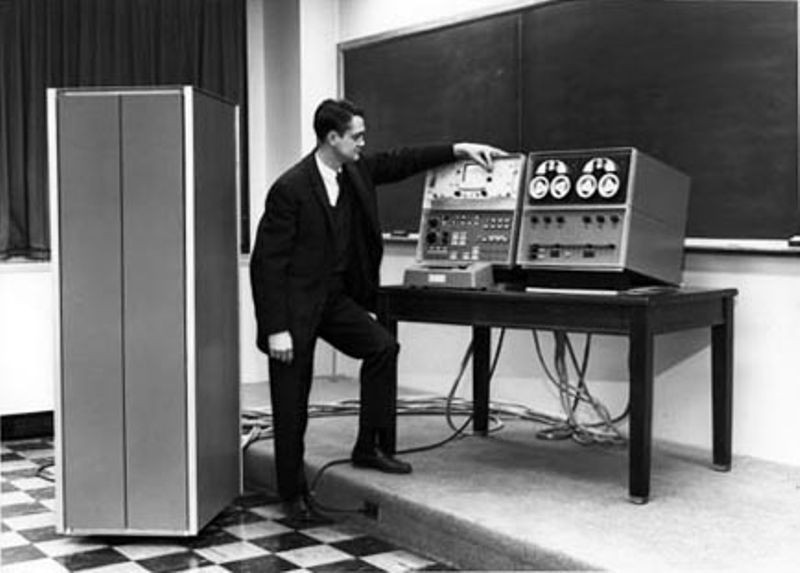
Wesley Clark with LINC
MIT LINC introduced
The LINC is an early and important example of a ‘personal computer,’ that is, a computer designed for only one user. It was designed by MIT Lincoln Laboratory engineer Wesley Clark. Under the auspices of a National Institutes of Health (NIH) grant, biomedical research faculty from around the United States came to a workshop at MIT to build their own LINCs, and then bring them back to their home institutions where they would be used. For research, Digital Equipment Corporation (DEC) supplied the components, and 50 original LINCs were made. The LINC was later commercialized by DEC and sold as the LINC-8.
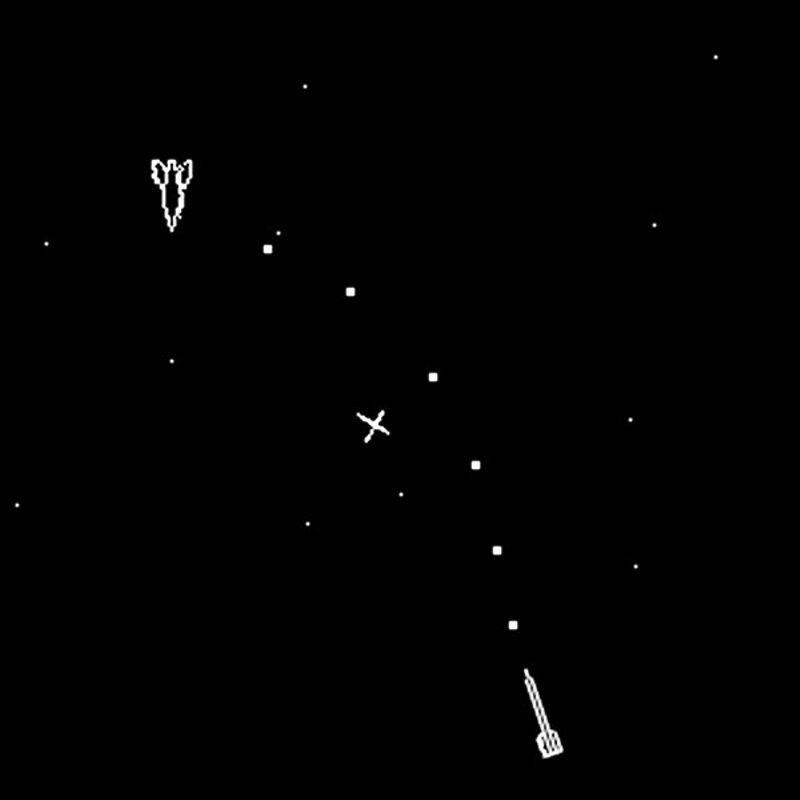
Screenshot, SpaceWar!
Spacewar! debuts
MIT receives a DEC PDP-1 computer in the fall of 1961. While there were some demonstration programs, Steve “Slug” Russell thought a game would make a better presentation. Along with Martin “Shag” Graetz and Wayne Wiitanen, he designes a space battle game based on the Lensman series of novels by E.E. “Doc” Smith called Spacewar! Two ships, one called the ‘Wedge’ and the other the ‘Needle,’ would fly around a star-filled background. Peter Samson provided a program called Expensive Planetarium that generated an accurate star-filled background. The game would later be distributed through DECUS, the Digital Equipment Corporation users group, ensuring it would become widespread in the technical and university computing communities.
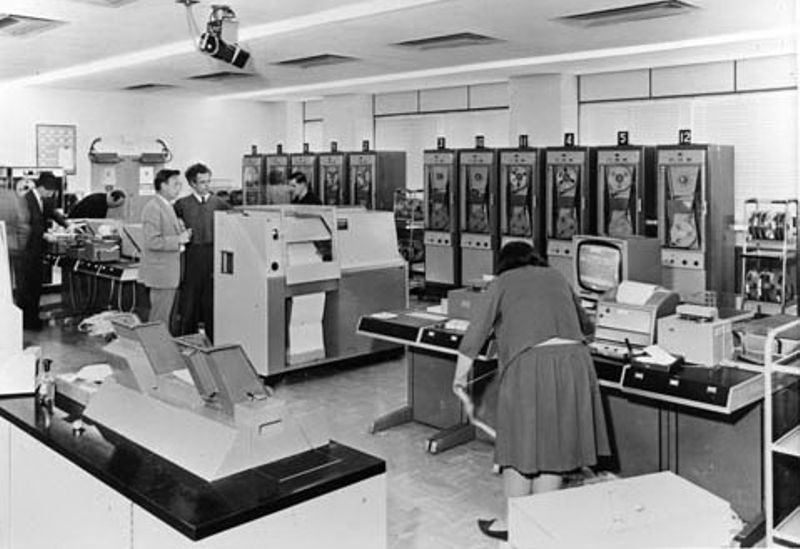
Chilton Atlas installation
The Atlas Computer debuts
A joint project of England’s Manchester University, Ferranti Computers, and Plessey, Atlas comes online nine years after Manchester’s computer lab begins exploring transistor technology. Atlas was the fastest computer in the world at the time and introduced the concept of “virtual memory,” that is, using a disk or drum as an extension of main memory. System control was provided through the Atlas Supervisor, which some consider to be the first true operating system.

RCA thin-film memory
Thin-film memory
Thin-film memory is introduced. Sperry Rand developed this faster variation on core memory. Small glass plates held tiny dots of magnetic metal film interconnected with printed drive and sense wires. Used in the UNIVAC 1107 for high-speed registers, it proved too expensive for general use. However, it did find a larger market in military computers and higher end projects where speed was a premium. Several other manufacturers, such as RCA, also developed thin-film memory.

Table of ASCII codes
ASCII
ASCII — American Standard Code for Information Interchange — permits machines from different manufacturers to exchange data. The ASCII code consisted of 128 unique strings of ones and zeros. Each sequence represented a letter of the English alphabet, an Arabic numeral, an assortment of punctuation marks and symbols, or a function such as a carriage return. ASCII can only represent up to 256 symbols, and for this reason many other languages are better supported by Unicode, which has the ability to represent over 100,000 symbols.
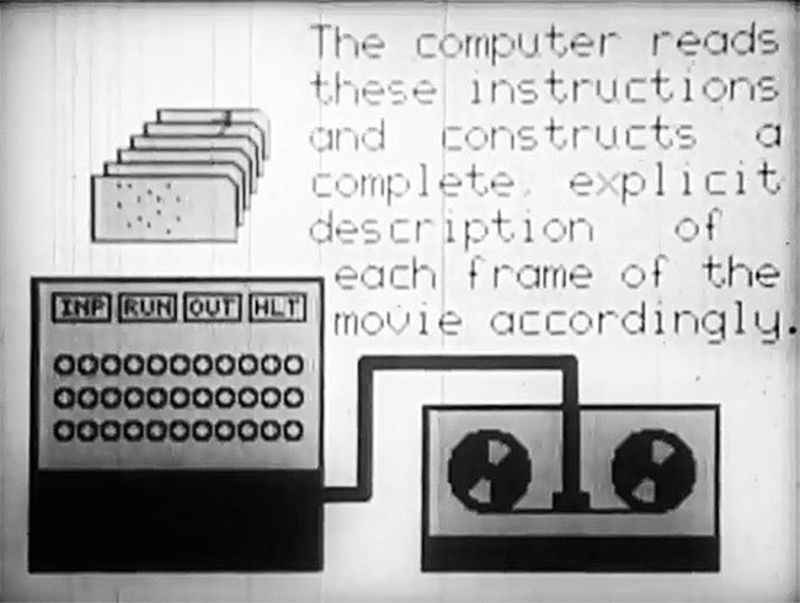
Still from A Computer Technique for the Production of Animated Movies
BEFLIX developed at Bell Labs
In the early 1960s, Bell Labs is at the forefront of research into computer arts and graphics. Researcher Ken Knowlton, using the Lab’s IBM 7094 mainframe computer, developed a specialized language for computer animation called BEFLIX. The language allowed Knowlton and collaborators, such as Stan Vanderbeek and Lillian Schwartz, to create 252 by 184 pixel images and animations using 8 shades of gray, which could be captured to film using a Stromberg-Carlson 4020 microfilm recorder. Some of these films are considered landmark works, such as Man and his World, which showed at the 1967 World’s Fair in Montreal.
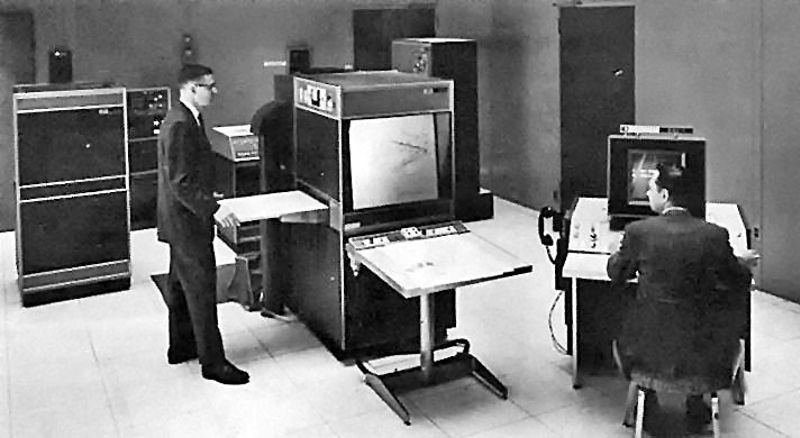
DAC-1 CAD program in use
DAC-1 computer aided design program is released
In 1959, General Motors Research Laboratories appoints a special research team to investigate the use of computers in designing automobiles. In 1960, IBM joined the project, producing the first commercially available Computer Aided Design program, known as DAC-1. Out of that project came the IBM 2250 display terminal as well as many advances in computer timesharing and the use of a single processor by two or more terminals.
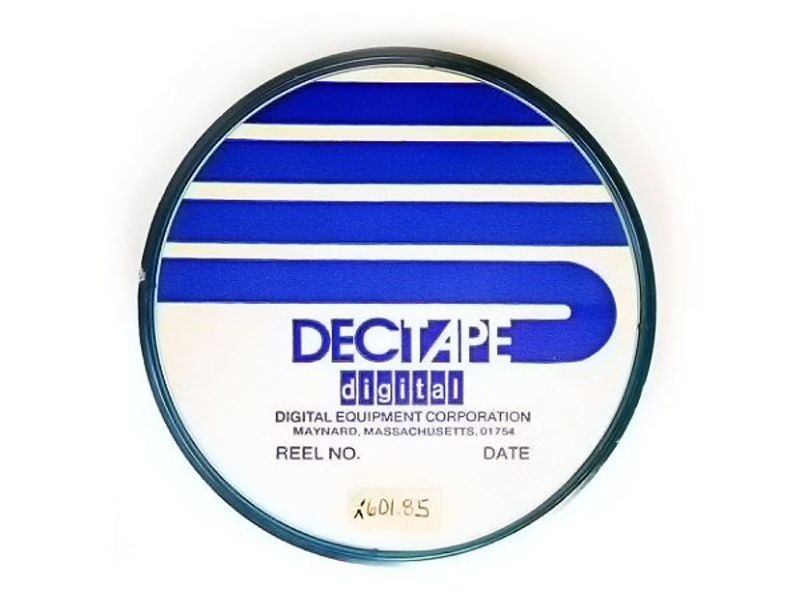
Reel of DECtape packaging
DECtape
DECtape is introduced. It was a modification of DEC’s earlier LINCtape, and as a reliable and inexpensive storage medium was used in several generations of DEC minicomputers. The ¾-inch tape was widely thought to be an improvement over paper tape and part of its reliability stemmed from the fact that it was laminated and the magnetic part of the tape was sandwiched between two layers of mylar. DECtape was often used as a form of personal data storage, as the small reels could be easily hand-carried.
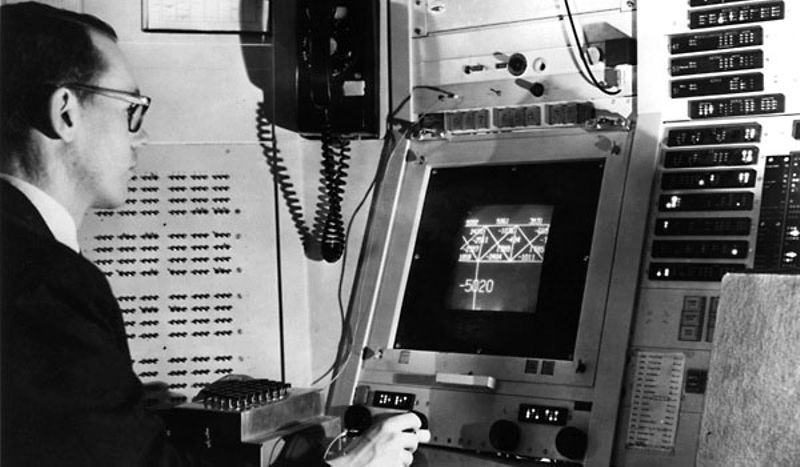
Ivan Sutherland using Sketchpad
Ivan Sutherland publishes Sketchpad
Ivan Sutherland publishes Sketchpad, an interactive, real-time computer drawing system, as his MIT doctoral thesis. Using a light pen and Sketchpad, a designer could draw and manipulate geometric figures on a computer screen. Blossoming into the best known of the early drawing applications, Sketchpad influenced a generation of design and drafting programs. Although used mostly for engineering drawings, it had some artistic applications, including a famous drawing of Nefertiti that could be animated to a limited extent.
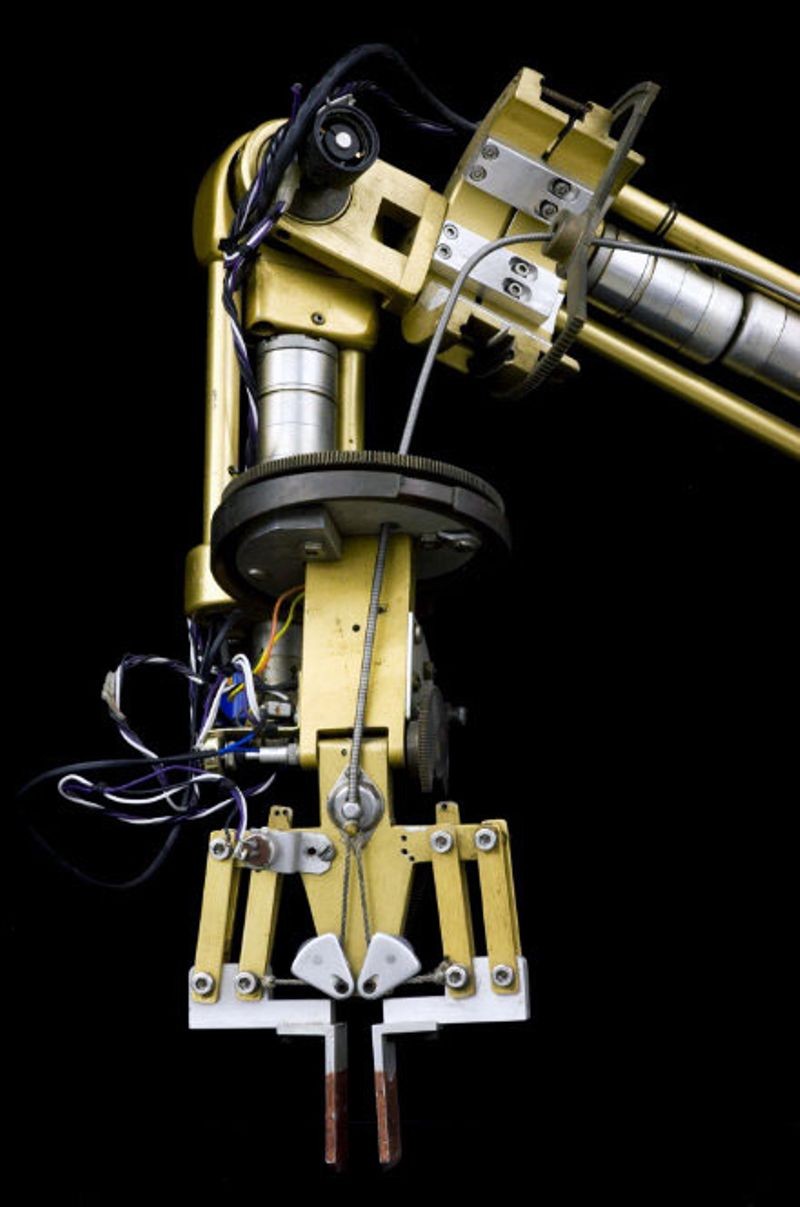
The Rancho Arm
The Rancho Arm
Researchers design the Rancho Arm robot at Rancho Los Amigos Hospital in Downey, California as a tool for the handicapped. The Rancho Arm´s six joints gave it the flexibility of a human arm. Acquired by Stanford University in 1963, it holds a place among the first artificial robotic arms to be controlled by a computer.
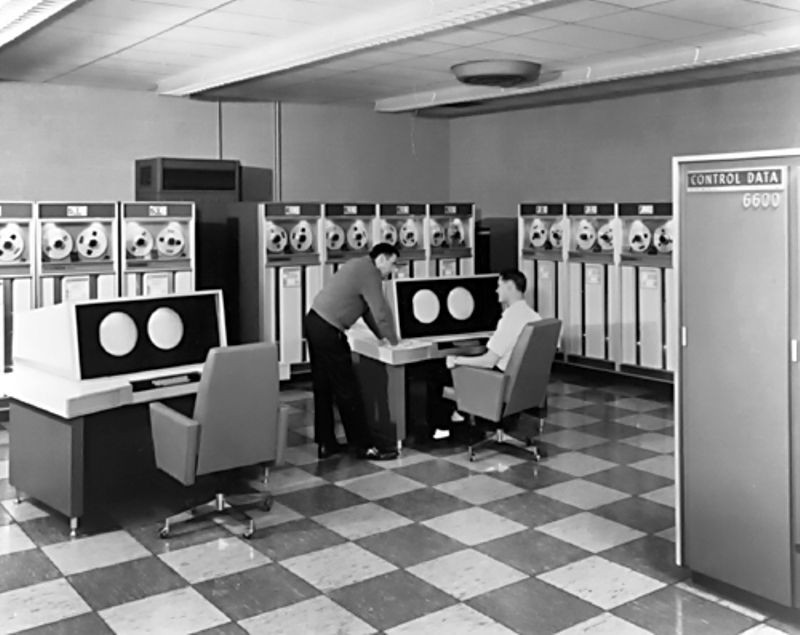
CDC 6600
CDC 6600 supercomputer introduced
The Control Data Corporation (CDC) 6600 performs up to 3 million instructions per second —three times faster than that of its closest competitor, the IBM 7030 supercomputer. The 6600 retained the distinction of being the fastest computer in the world until surpassed by its successor, the CDC 7600, in 1968. Part of the speed came from the computer´s design, which used 10 small computers, known as peripheral processing units, to offload the workload from the central processor.
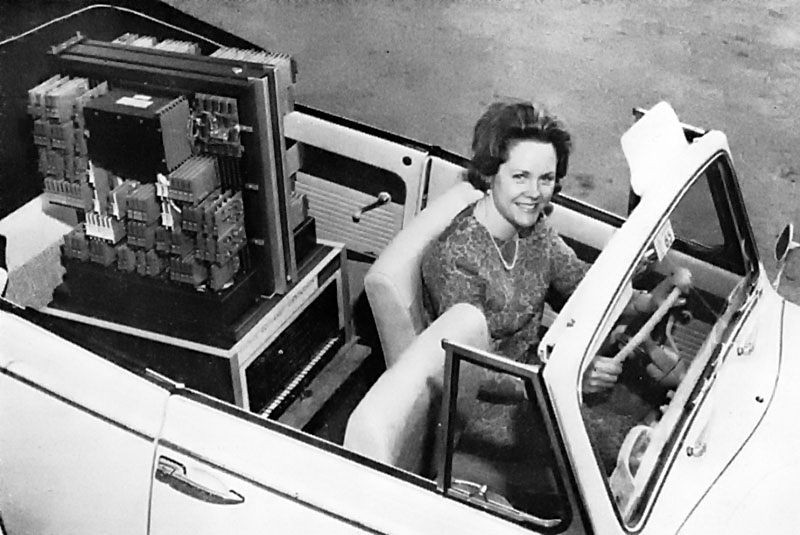
PDP-8 advertisement
Digital Equipment Corporation introduces the PDP-8
The Canadian Chalk River Nuclear Lab needed a special device to monitor a reactor. Instead of designing a custom controller, two young engineers from Digital Equipment Corporation (DEC) — Gordon Bell and Edson de Castro — do something unusual: they develop a small, general purpose computer and program it to do the job. A later version of that machine became the PDP-8, the first commercially successful minicomputer. The PDP-8 sold for $18,000, one-fifth the price of a small IBM System/360 mainframe. Because of its speed, small size, and reasonable cost, the PDP-8 was sold by the thousands to manufacturing plants, small businesses, and scientific laboratories around the world.
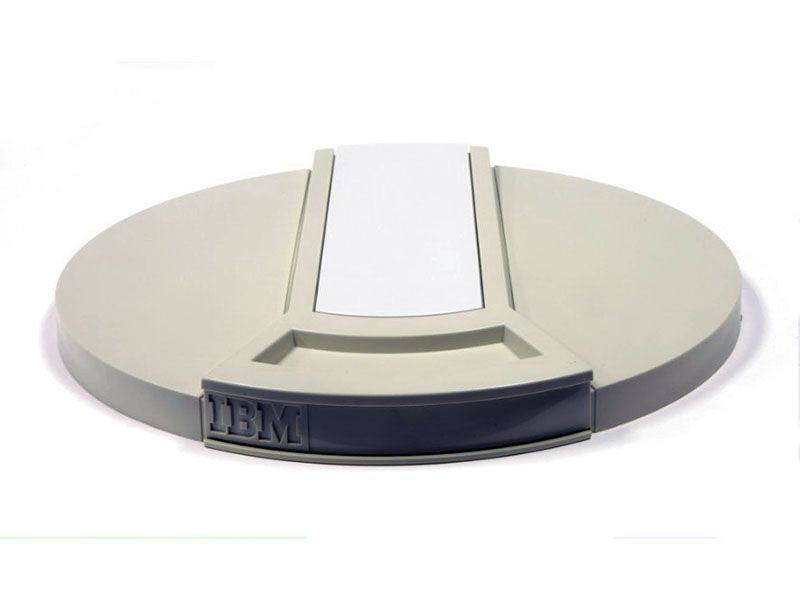
IBM 2315 disk cartridge
IBM 2315 disk cartridge
IBM’s 2315 disk cartridge is announced. This 1MB disk cartridge was used with the IBM 1800 and 1130 computers, and it provided easily transported “personal storage” for users of those small computers. Each 2315 consisted of a magnetically coated, direct access disk encased in a plastic cartridge that easily fit into built-in disk drives. When it was inserted into the disk drive, a power drive engaged the disk and spun it at 1,500 revolutions per minute. Simultaneously, an arm extended to perform read and write functions on the disk’s magnetic surfaces.
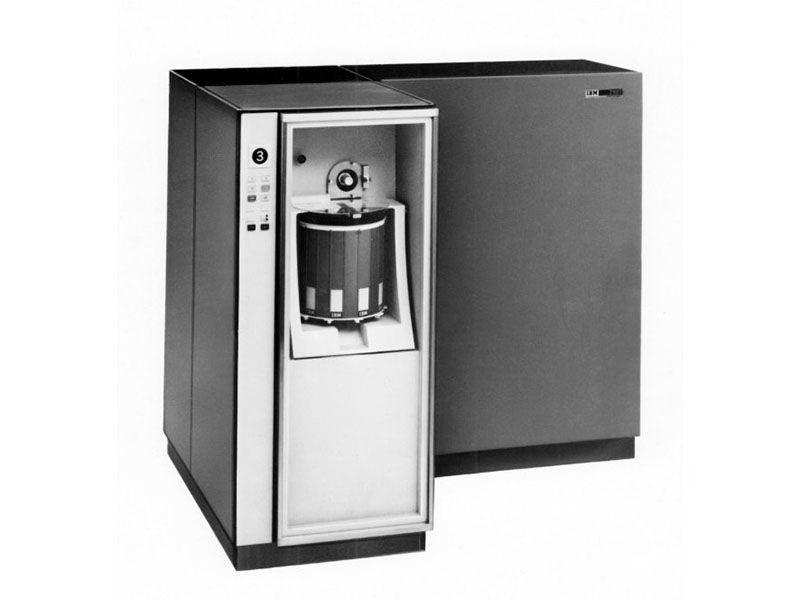
IBM 2321 Data Cell Drive
IBM 2321 Data Cell Drive
Seven years in the making, IBM’s 2321 Data Cell Drive stored up to 400 MB. The Data Cell Drive was announced with the System/360 mainframe computer. Wide magnetic strips were plucked from bins and wrapped around a rotating cylinder for reading and writing. Reliability problems plagued the initial models, but after improvements were made it became relatively reliable and sold until 1976.
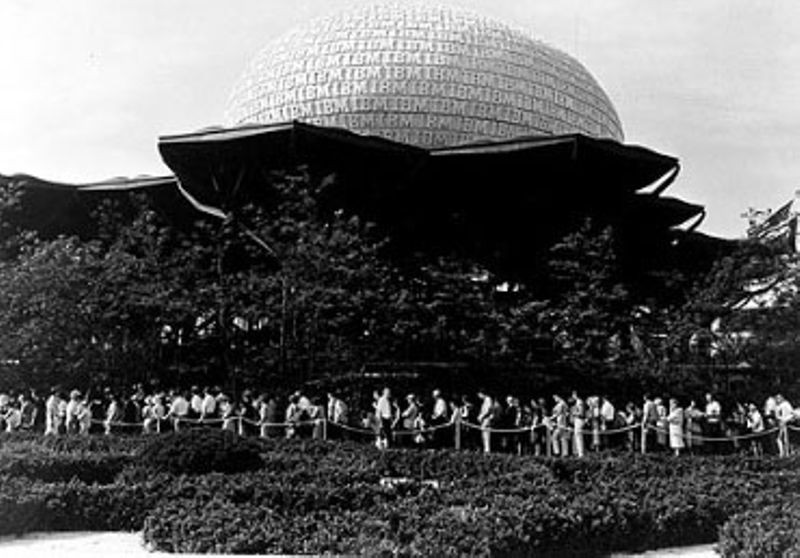
IBM Pavillion, 1964 World’s Fair
IBM Pavilion at New York World’s Fair
The New York World’s Fair of 1964 features demonstrations from governments and companies from around the world. IBM hired architect Eero Saarinen to design a major pavilion, featuring the Information Machine, an attraction and film designed by noted filmmakers Charles and Ray Eames. The pavilion featured demonstrations of IBM products such as the newly released IBM Selectric typewriter, machine translation and the IBM 1460, which demonstrated handwriting recognition and on-line information retrieval.
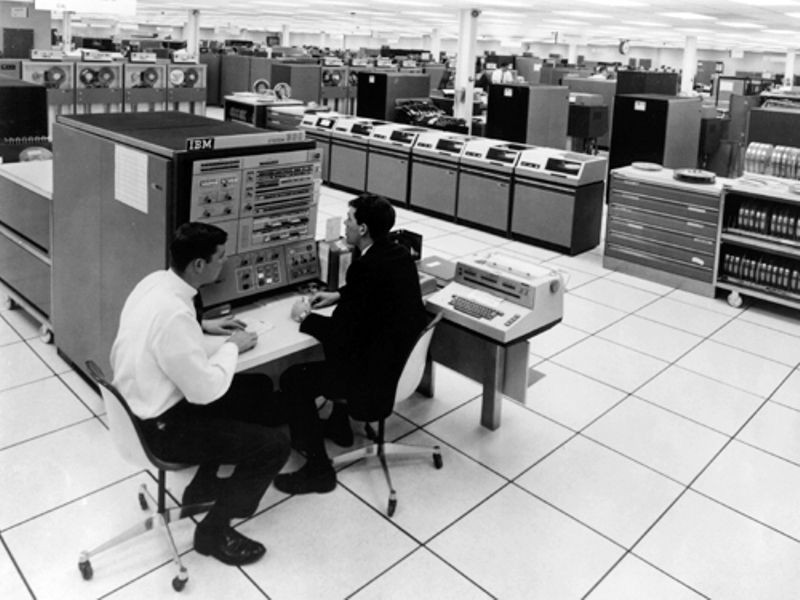
IBM 360 Model 40
IBM announces System/360
System/360 is a major event in the history of computing. On April 7, IBM announced five models of System/360, spanning a 50-to-1 performance range. At the same press conference, IBM also announced 40 completely new peripherals for the new family. System/360 was aimed at both business and scientific customers and all models could run the same software, largely without modification. IBM’s initial investment of $5 billion was quickly returned as orders for the system climbed to 1,000 per month within two years. At the time IBM released the System/360, the company had just made the transition from discrete transistors to integrated circuits, and its major source of revenue began to move from punched card equipment to electronic computer systems.

SABRE promotional button
IBM introduces SABRE
IBM introduces the SABRE reservation system for American Airlines. First tested in 1960, the system took over American’s reservations four years later. Running on dual IBM 7090 mainframes, SABRE was inspired by IBM’s work on the SAGE air-defense system. SABRE, which became a separate travel-services company in 2000, owns the Travelocity website.
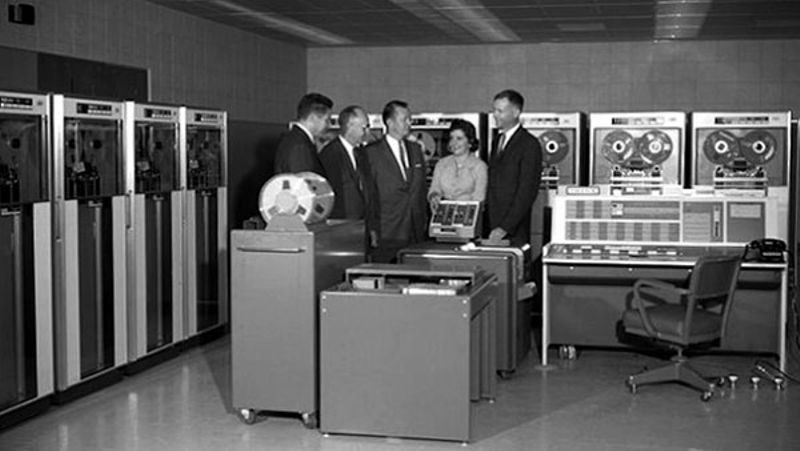
Project TACT team
Project TACT launched
Computer dating begins in earnest with Project TACT (Technical Automated Compatibility Testing). While students at Harvard had created dating programs, and television shows used computer matching as a gimmick, Project TACT was an ongoing service that initially matched residents of New York’s Upper East Side. Accountant Lewis Altfest, inspired by a visit to the Parker Pen Pavilion at the 1964 World’s Fair, brought in programmer Robert Ross to help design a system to match singles. Participants would fill out a questionnaire. The answers were then transferred to punched cards and fed into an IBM 1401 computer. After processing, each participant would receive 5 punched cards – blue to indicate male matches, pink for female matches. Though the business received a large amount of early media coverage, and expanded to all of New York, Project TACT lasted only a couple of years, ceasing operations when its founders lost interest.
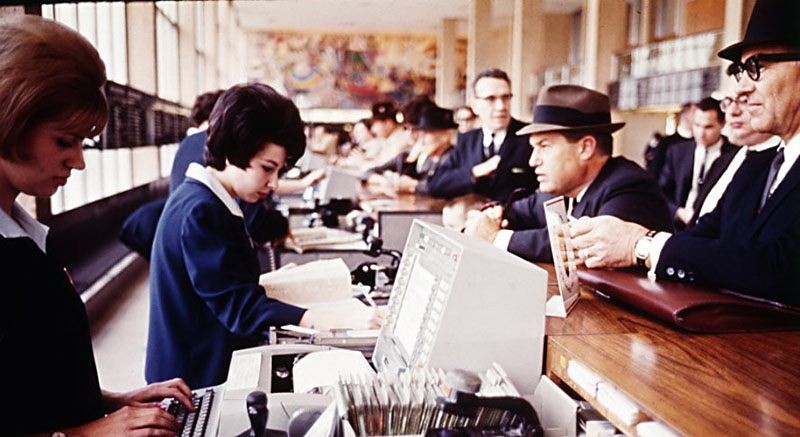
Airline reservation agents working with SABRE
SABRE comes on-line
SABRE is a joint project between American Airlines and IBM. Operational by 1964, it was not the first computerized reservation system, but it was well publicized and became very influential. Running on dual IBM 7090 mainframe computer systems, SABRE was inspired by IBM’s earlier work on the SAGE air-defense system. Eventually, SABRE expanded, even making airline reservations available via on-line services such as CompuServe, Genie, and America Online.
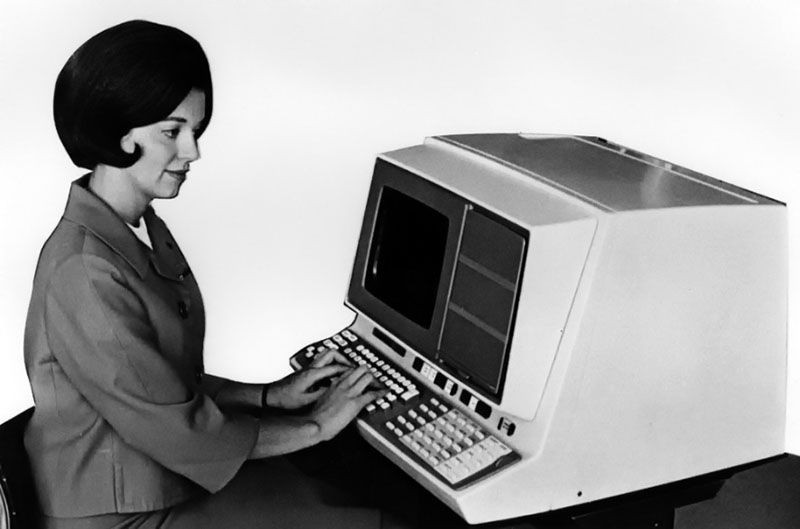
Unimatic terminal for United Airline’s competing system
SABRE
Online transaction processing makes its debut in IBM´s SABRE reservation system, set up for American Airlines. Using telephone lines, SABRE links 2,000 terminals in 65 cities to a pair of IBM 7090 computers, delivering data on any flight in less than three seconds. It remains the basis of modern travel sites including Travelocity. SABRE has been adapted from IBM’s earlier work on SAGE.
Teletype introduced its ASR-33 Teletype
At a cost to computer makers of roughly $700, the ASR-33 Teletype is originally designed as a low cost terminal for the Western Union communications network. Throughout the 1960s and ‘70s, the ASR-33 was a popular and inexpensive choice of input and output device for minicomputers and many of the first generation of microcomputers.
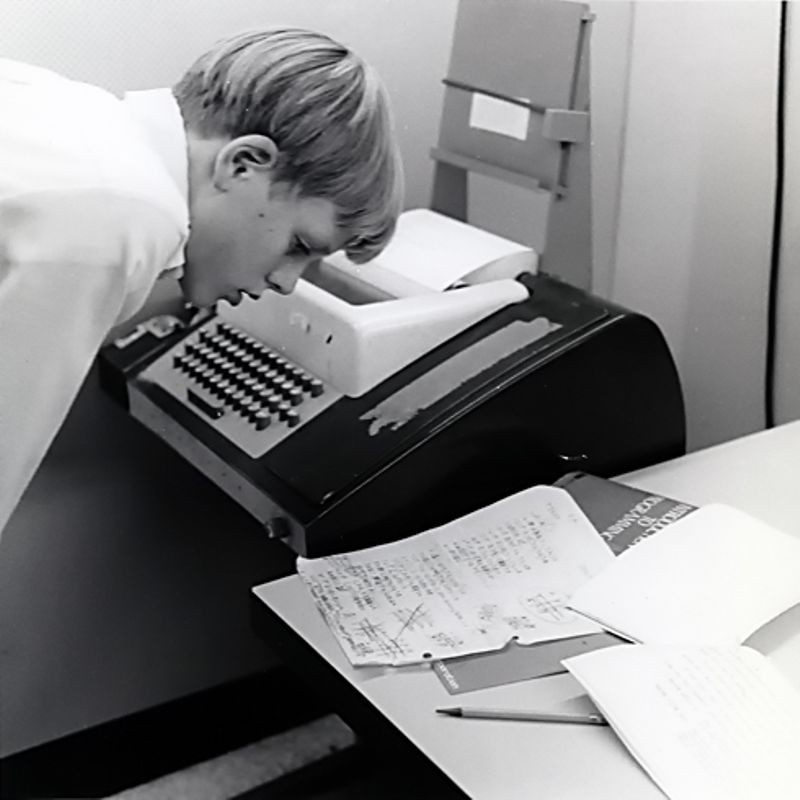
Student working with BASIC on a time-sharing system
Thomas Kurtz and John Kemeny create BASIC
Thomas Kurtz and John Kemeny create BASIC (Beginner’s All-purpose Symbolic Instruction Code), an easy-to-learn programming language, for their students at Dartmouth College who had no prior programming experience. Its use spread widely to schools all over the world. Over a decade later, most early personal computers were shipped with a version of BASIC embedded in their system, which opened up programming to an entirely new audience.
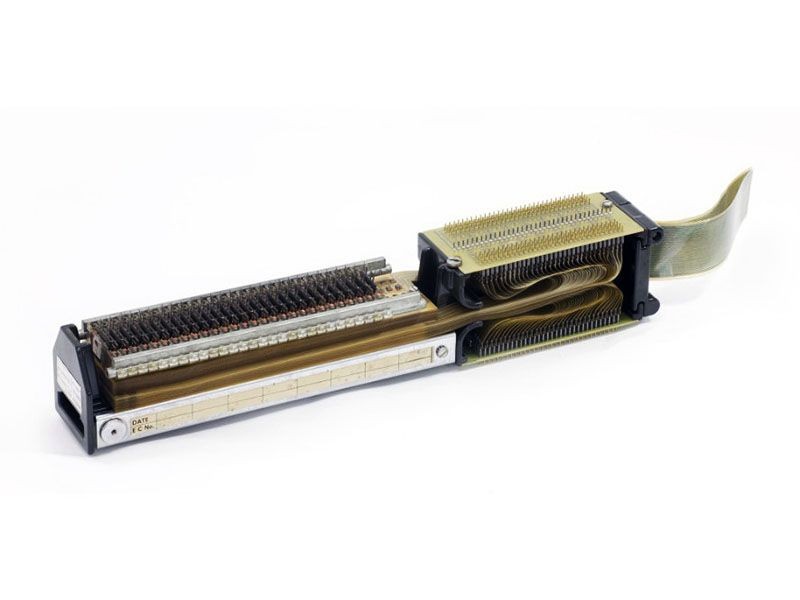
TROS module
Transformer Read Only Storage (TROS)
IBM introduces Transformer Read Only Storage (TROS) with the arrival of the IBM 360. TROS modules preceded solid-state ROM chips, and each bit of this read-only memory for microcode was a little magnetic transformer. Punches in the mylar strips controlled whether current flowed through the transformer or around it, representing a binary zero or a one.
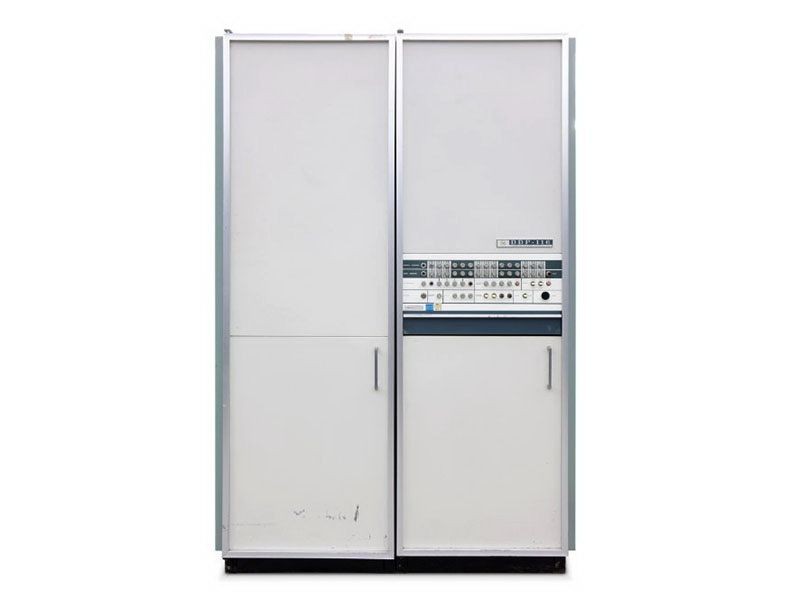
DDP-116 General Purpose Computer
3C DDP-116 introduced
Designed by engineer Gardner Hendrie for Computer Control Corporation (CCC), the DDP-116 is announced at the 1965 Spring Joint Computer Conference. It was the world’s first commercial 16-bit minicomputer and 172 systems were sold. The basic computer cost $28,500.
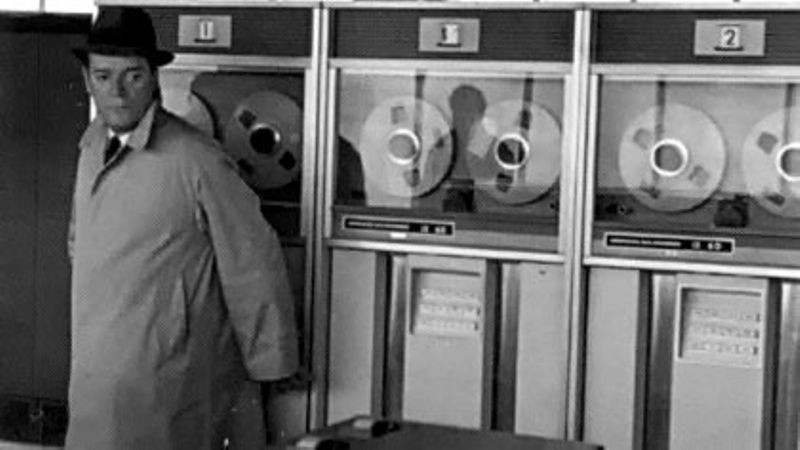
Still from Jean-Luc Godard’s Alphaville
Alphaville released
A leading light in the La Nouvelle Vague (The New Wave) of French cinema, director Jean-Luc Godard tackles science fiction in his gritty detective story Alphaville. Set in a technocratic dystopia, Alphaville featured secret agent Lemmy Caution (played by Eddie Constantine) as he investigates the situation surrounding Professor von Braun, creator of the Alpha 60 computer. This computer, which has gained sentience, controls Alphaville, and Caution must battle it using his two most dangerous weapons – his handgun and poetry! Alphaville served as an inspiration for the formation of the Cyberpunk genre.
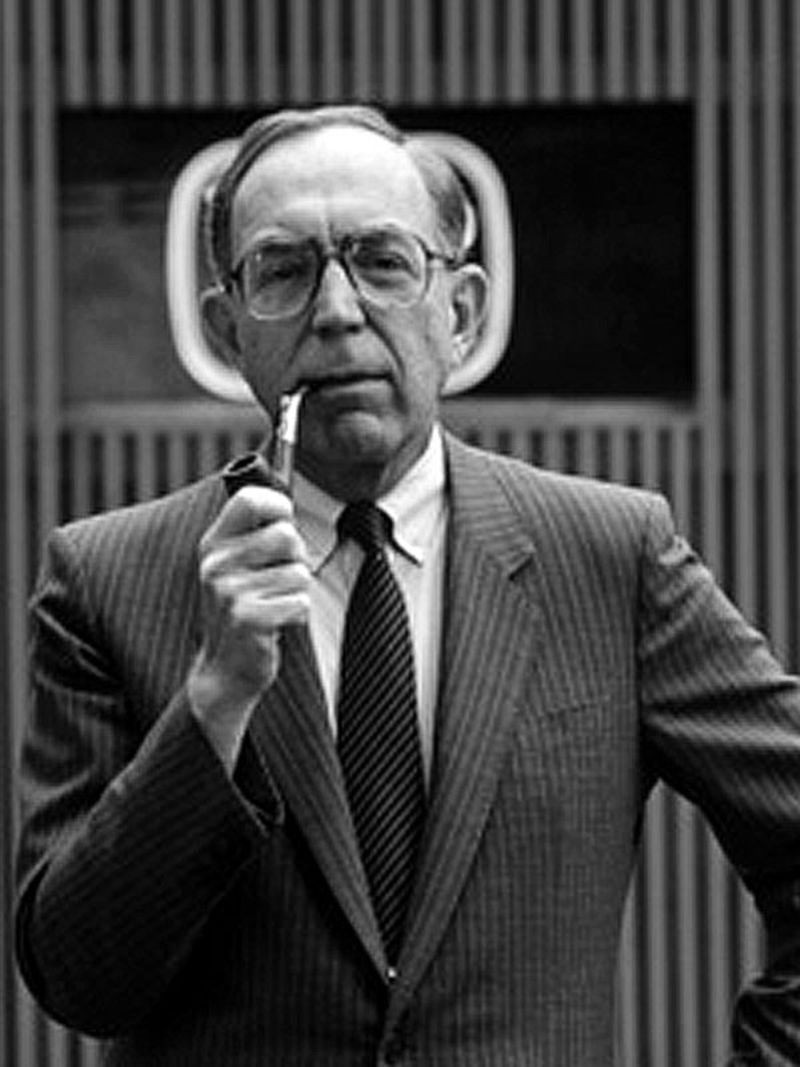
Ed Feigenbaum
DENDRAL artificial intelligence program
A Stanford team led by professors Ed Feigenbaum, Joshua Lederberg and Carl Djerassi creates DENDRAL, the first “expert system.” DENDRAL was an artificial intelligence program designed to apply the accumulated expertise of specialists to problem solving. Its area of specialization was chemistry and physics. It applied a battery of “if-then” rules to identify the molecular structure of organic compounds, in some cases more accurately than experts.

IBM 2314 direct access storage facility
IBM 2314 direct access storage facility
The IBM 2314 direct access storage facility is introduced. It was an improvement over the 2311 disk storage drive and provided higher data storage density. Eight drives (plus a spare) with removable 29 MB disk packs shared one control unit. The extra drive was a spare for the user or could be worked on by a field engineer while the other eight were in use by the customer. Attached to a System/360 computer, it supported applications like online banking, ATMs, and just-in-time manufacturing.

Olivetti Programma 101
Olivetti Programma 101 is released
Announced the year previously at the New York World’s Fair the Programma 101 goes on sale. This printing programmable calculator was made from discrete transistors and an acoustic delay-line memory. The Programma 101 could do addition, subtraction, multiplication, and division, as well as calculate square roots. 40,000 were sold, including 10 to NASA for use on the Apollo space project.
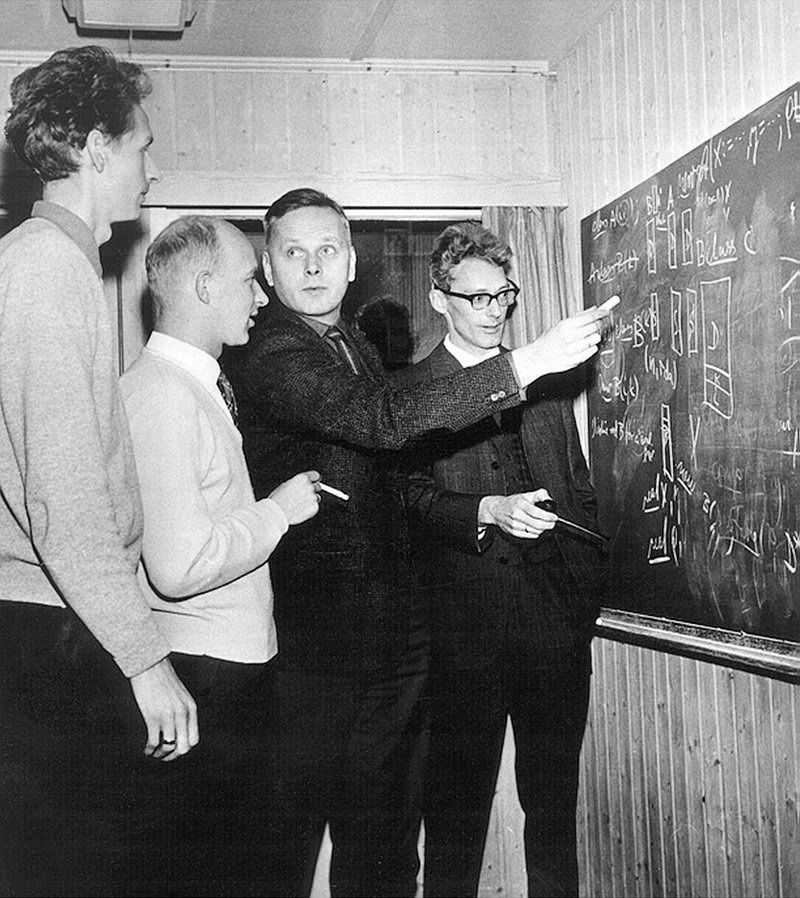
Bjørn Myhrhaug, Sigurd Kubosch, Kristen Nygaaard, and Ole-Johan Dahl discussing Simula.
Simula is written by Kristen Nygaard and Ole-Johan Dahl
Simula, an object-oriented language, is written by Kristen Nygaard and Ole-Johan Dahl at the Norwegian Computing Center. Based largely on the Algol 60 programming language, Simula grouped data and instructions into blocks called objects, each representing one facet of a system intended for simulation. In addition to simulation, Simula also has applications in computer graphics, process control, scientific data processing and other fields.
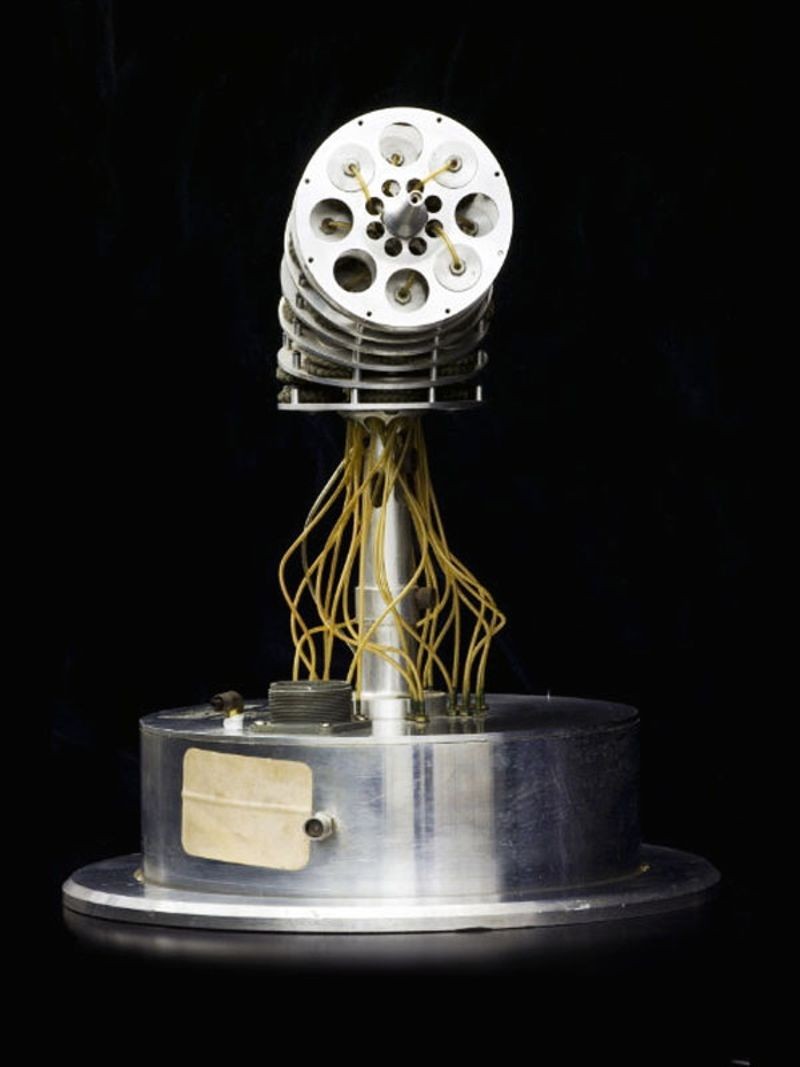
The Orm
The Orm
Developed at Stanford University, the Orm robot (Norwegian for “snake”) was an unusual air-powered robotic arm. It moved by inflating one or more of its 28 rubber bladders that were sandwiched between seven metal disks. The design was abandoned because movements could not be repeated accurately.
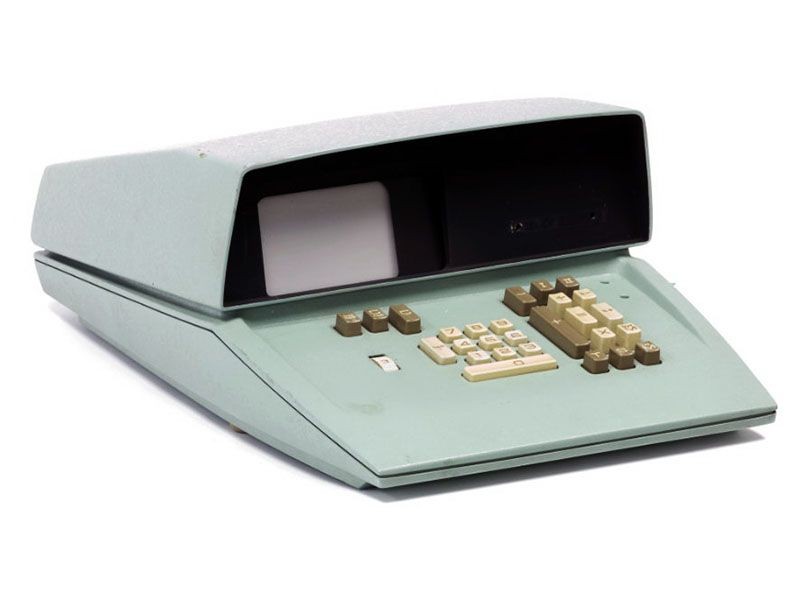
Victor 3900 engineering prototype
Victor 3900 desktop calculator
Victor Comptometer Corporation produces the Victor 3900 desktop calculator. Six 100-bit MOS shift registers built by General Microelectronics provided memory for the calculator, which was the first to use MOS for both logic and memory. The calculator could perform multiple functions and had a small, integrated CRT display. However, the immature MOS manufacturing process made the parts unreliable, limiting sales.
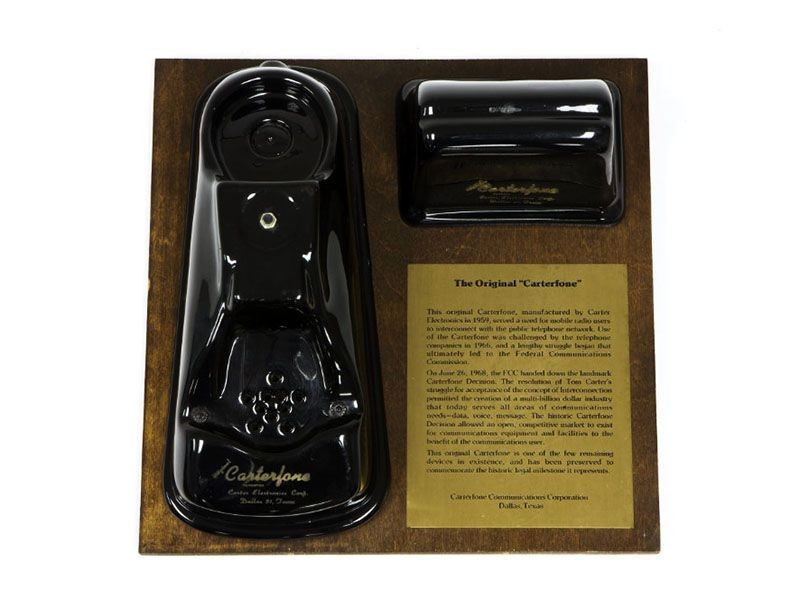
Carterfone with commemorative plaque
Carterfone
Used by Texas oilmen, the Carterfone acoustically connects mobile radios to the telephone network. Telephone companies sue in 1966. The FCC supports Carter, freeing U.S. telephone lines for many uses—including later answering machines, faxes and modems. Users in some countries will wait until the 1990s for similar freedoms. Modems create a kind of de facto net neutrality; telephone companies have no control over what is sent over their lines with a modem.
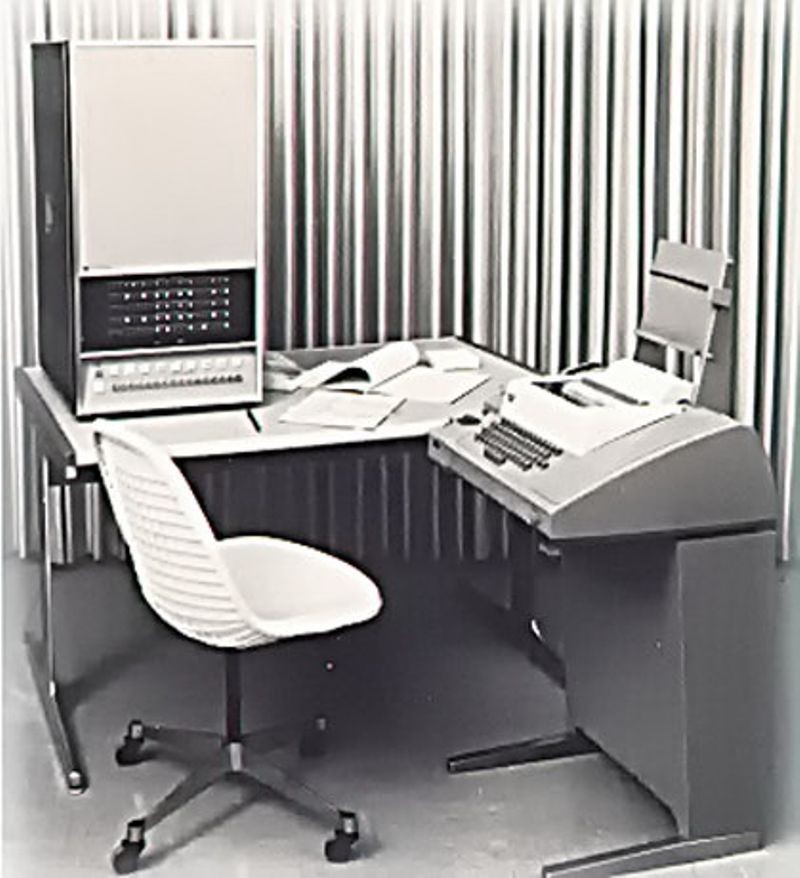
HP 2116A system
HP introduces the HP 2116A
The 2116A is HP’s first computer. It was developed as a versatile instrument controller for HP’s growing family of programmable test and measurement products. It interfaced with a wide number of standard laboratory instruments, allowing customers to computerize their instrument systems. The 2116A also marked HP’s first use of integrated circuits in a commercial product.
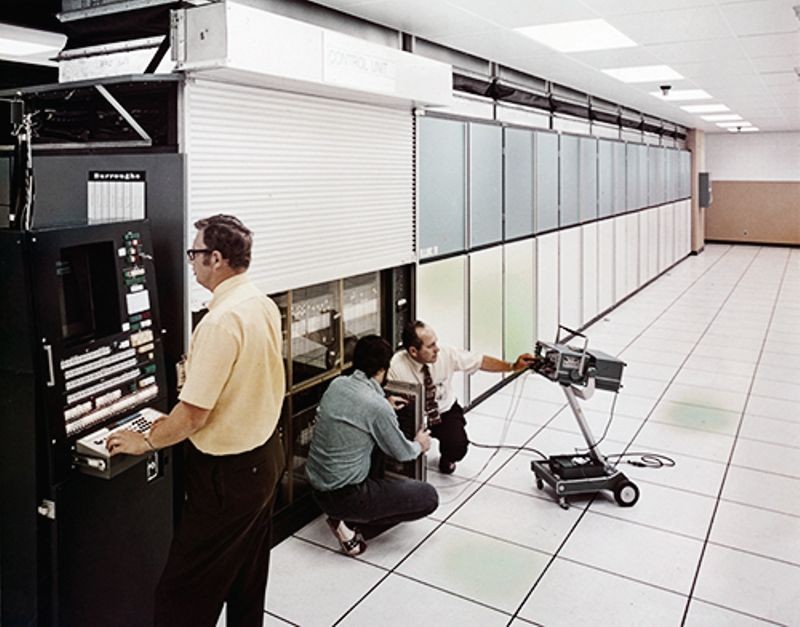
ILLIAC IV
ILLIAC IV project begins
A large parallel processing computer, the ILLIAC IV does not operate until 1972. It was eventually housed at NASA´s Ames Research Center in Mountain View, California. The most ambitious massively parallel computer at the time, the ILLIAC IV was plagued with design and production problems. Once finally completed, it achieved a computational speed of 200 million instructions per second and 1 billion bits per second of I/O transfer via a unique combination of its parallel architecture and the overlapping or “pipelining” structure of its 64 processing elements.
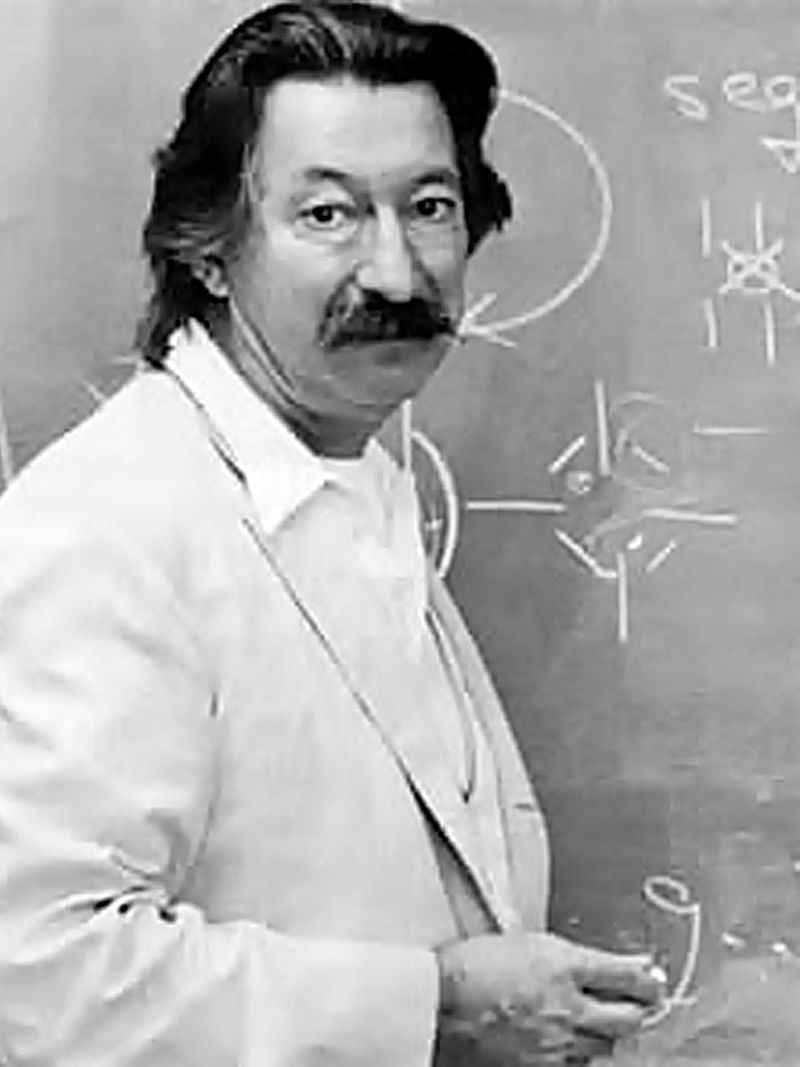
Joseph Weizenbaum
Joseph Weizenbaum’s ELIZA
Joseph Weizenbaum finishes ELIZA. ELIZA is a natural language processing environment. Its most famous mode was called DOCTOR, which responded to user questions much like a psychotherapist. DOCTOR was able to trick some users into believing they were interacting with another human, at least until the program reached its limitations and became nonsensical. DOCTOR used predetermined phrases or questions and would substitute key words to mimic a human actually listening to user queries or statements.
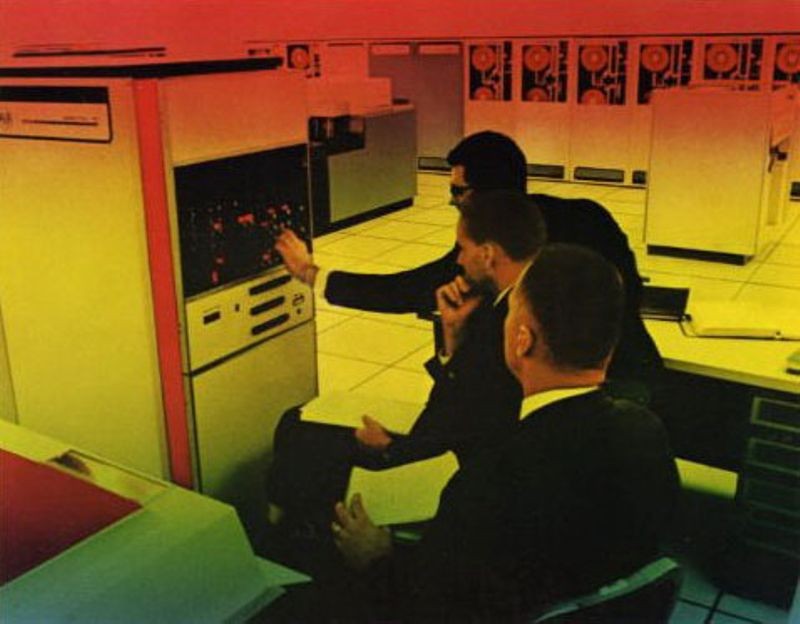
Image from RCA Spectra-70 brochure
RCA announces its Spectra series of computers
The first large commercial computers to use integrated circuits, RCA highlights the IC’s advantage over IBM’s custom SLT modules. Spectra systems were marketed on the basis of their compatibility with the IBM System/360 series of computer since it implemented the IBM 360 instruction set and could run most IBM software with little or no modification.
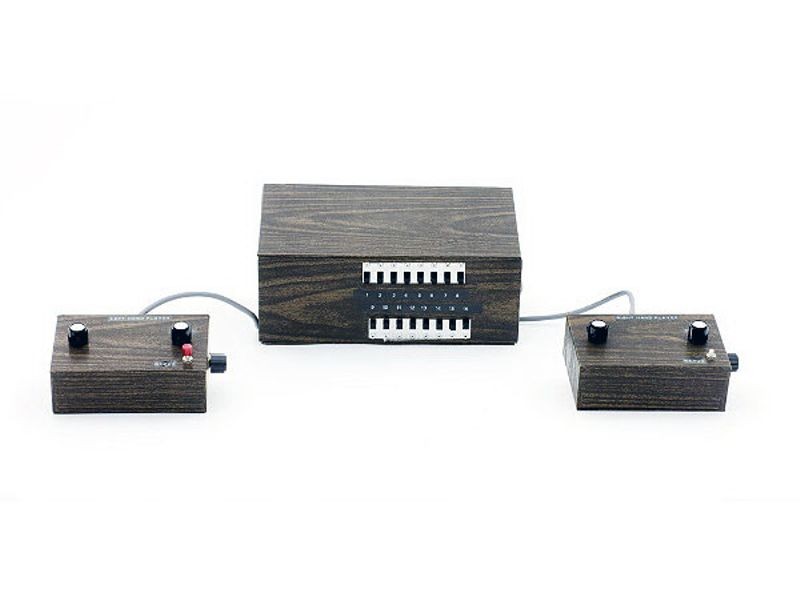
Brown Box reproduction by Ralph Baer
Ralph Baer designs the Brown Box
In the summer of 1966, Sanders Associates’ television engineer Ralph Baer begins experimenting with using a television to play games. His first design, called the Brown Box, allowed users to play several different games on a standard television set, including table tennis game (presaging Atari’s Pong), without requiring a computer, microprocessor, or software. The Brown Box also had a light gun accessory for playing shooting games.
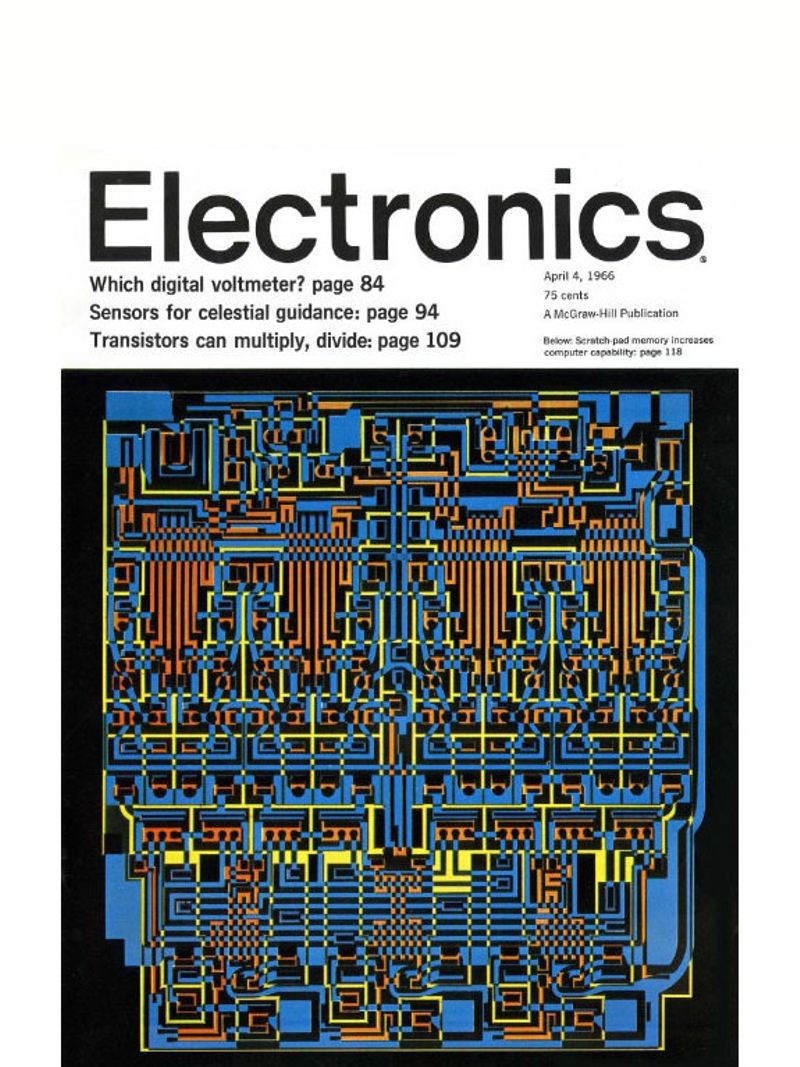
Cover of April 4, 1966 issue of Electronics magazine
Signetics 8-bit RAM
The April 4, 1966 issue of Electronics magazine features an 8-bit RAM designed by Signetics for the SDS Sigma 7 mainframe computer. The article was titled, “Integrated scratch pads sire new generation of computers.” This 8-bit RAM was one of the earliest uses of dedicated semiconductor memory devices in computer systems.

Star Trek title screen
Star Trek debuts with multiple computation devices
One of the most popular television series of all-time, Star Trek tells of the journeys of the starship Enterprise and its 5-year mission of exploration. Star Trek speculated on technologies such as voice-recognition, handheld computing and communications, human computer interaction, and machine-supported medical diagnosis. The technologies displayed influenced generations of filmmakers, writers, and especially technologists–some of whom are still working today to create technologies featured on the show.
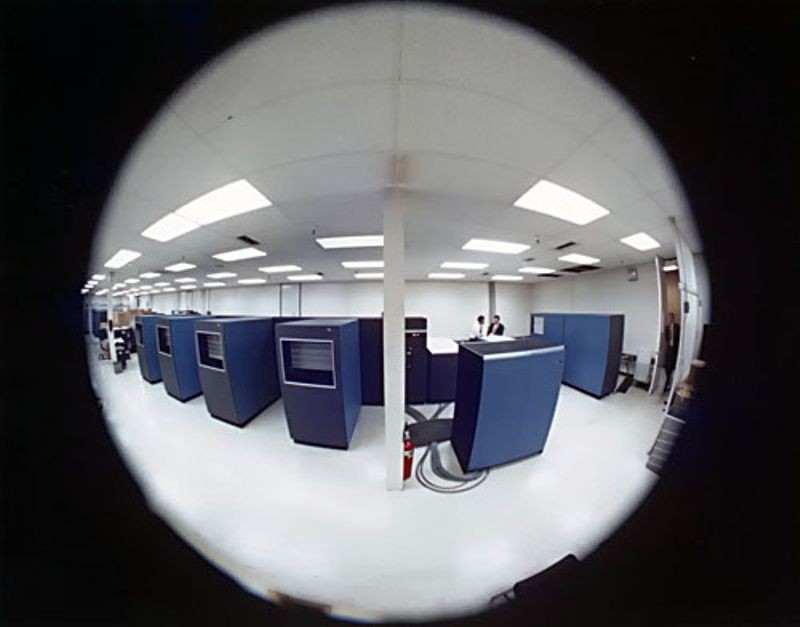
IBM 1360 Photo-Digital Storage System
IBM 1360 Photo-Digital Storage System
The IBM 1360 Photo-Digital Storage System is installed at Lawrence Livermore National Laboratory. The system could read and write up to a trillion bits of information—the first such system in the world. The 1360 used thin strips of film on which were written data created by an electron beam and a wet photographic development process. The system used sophisticated error correction and a pneumatic robot to move the film strips to and from a storage unit. Only five were built.
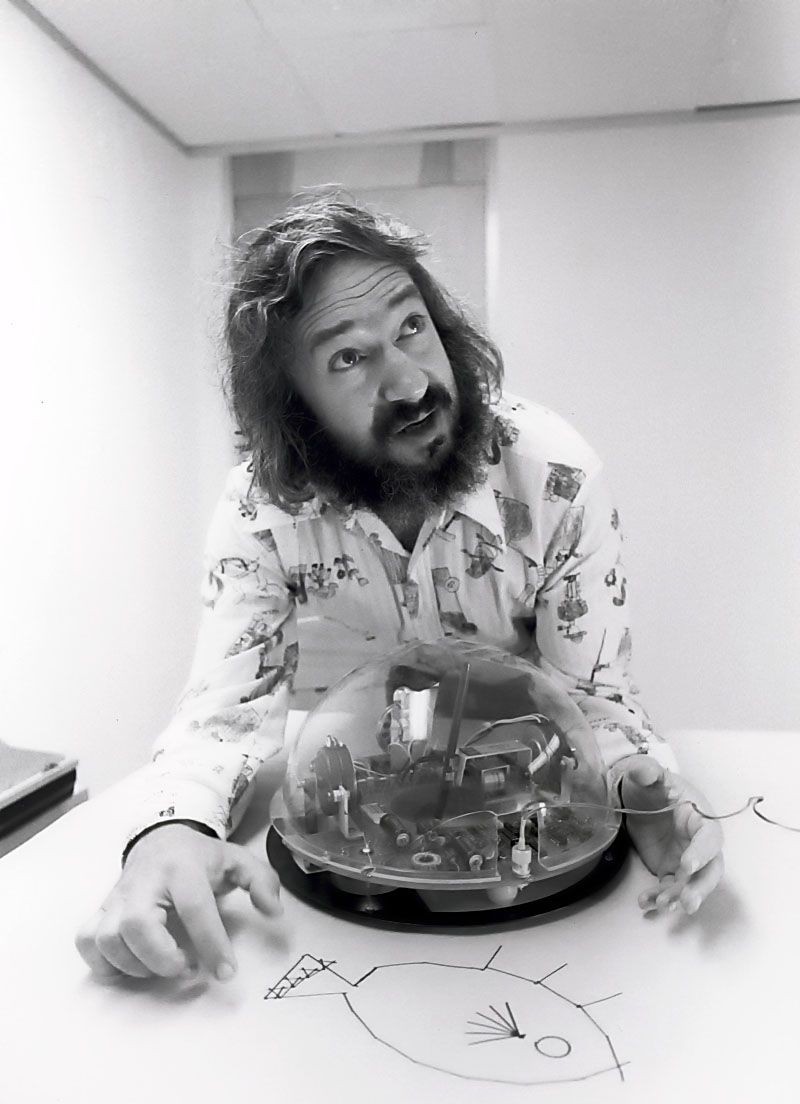
Seymour Papert with LOGO ‘turtle’
Seymour Papert designs LOGO
Seymour Papert designs LOGO as a computer language for children. Initially a drawing program, LOGO controlled the actions of a mechanical “turtle,” which traced its path with pen on paper. Electronic turtles made their designs on a video display monitor.
Papert emphasized creative exploration over memorization of facts: “People give lip service to learning to learn, but if you look at curriculum in schools, most of it is about dates, fractions, and science facts; very little of it is about learning. I like to think of learning as an expertise that every one of us can acquire.”
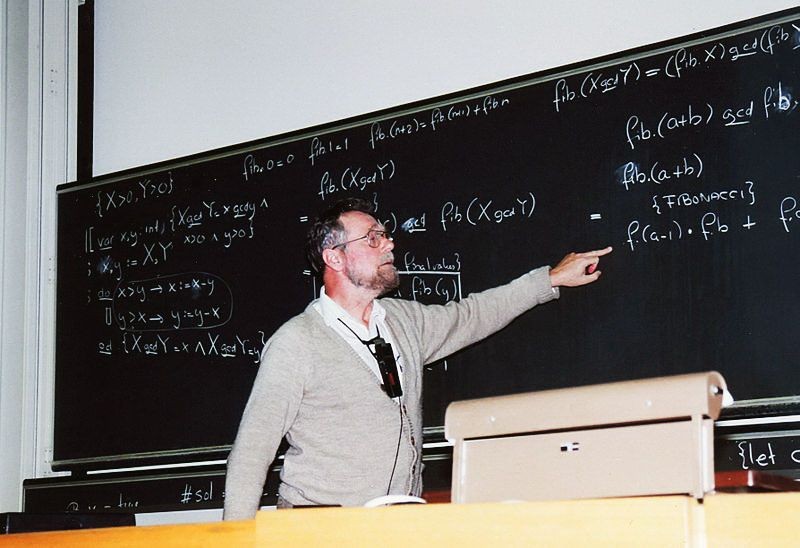
Edsger Dijkstra
“GO TO considered harmful” letter is published
Edsger Dijkstra´s “GO TO considered harmful” letter is published in Communications of the ACM, fires the first salvo in the structured programming wars. He called for abolishing the unrestricted GOTO statements used in higher-level languages, and argued that they complicated programming. The ACM considered the resulting acrimony sufficiently harmful that it established a policy of no longer printing articles taking such an assertive position against a coding practice.

2001: A Space Odyssey by Stanley Kubrick
2001: A Space Odyssey released
Based on the short story The Sentinel by author Arthur C. Clarke, Stanley Kubrick’s 2001: A Space Odyssey tells the story of the HAL 9000 computer as it malfunctions during the Discovery One spaceship’s trip to Jupiter to investigate a mysterious signal. The HAL 9000 computer (Heuristically programmed ALgorithm computer 9000), which controlled all aspects of ship operations, killed the crew being transported in stasis, and was finally shut-down by the only surviving crew member. The presentation of HAL demonstrated advanced technologies including speech synthesis, voice and visual recognition, human-computer interaction, and even computer chess.

DSKY interface for the Apollo Guidance Computer
Apollo Guidance Computer (AGC) makes its debut
Designed by scientists and engineers at MIT’s Instrumentation Laboratory, the Apollo Guidance Computer (AGC) is the culmination of years of work to reduce the size of the Apollo spacecraft computer from the size of seven refrigerators side-by-side to a compact unit weighing only 70 lbs. and taking up a volume of less than 1 cubic foot. The AGC’s first flight was on Apollo 7. A year later, it steered Apollo 11 to the lunar surface. Astronauts communicated with the computer by punching two-digit codes into the display and keyboard unit (DSKY). The AGC was one of the earliest uses of integrated circuits, and used core memory, as well as read-only magnetic rope memory. The astronauts were responsible for entering more than 10,000 commands into the AGC for each trip between Earth and the Moon.

Customer service representatives at A. Leon Capel & Sons
CICS is released
CICS (Customer Information Control System), an IBM transaction processing system, is released. Before CICS was introduced, many industries used punched card batch processing for high-volume customer transactions. As it allowed online transaction processing, CICS was able to replace this method and greatly sped up the way that companies interacted with their customers.
It was first used in the public utility industry for access to customer information and transactions, but soon after its release it was quickly adopted by a wide spectrum of industries including banking, oil, insurance and even smaller companies. Although it was originally intended to only last a few years, CICS is still in use today.
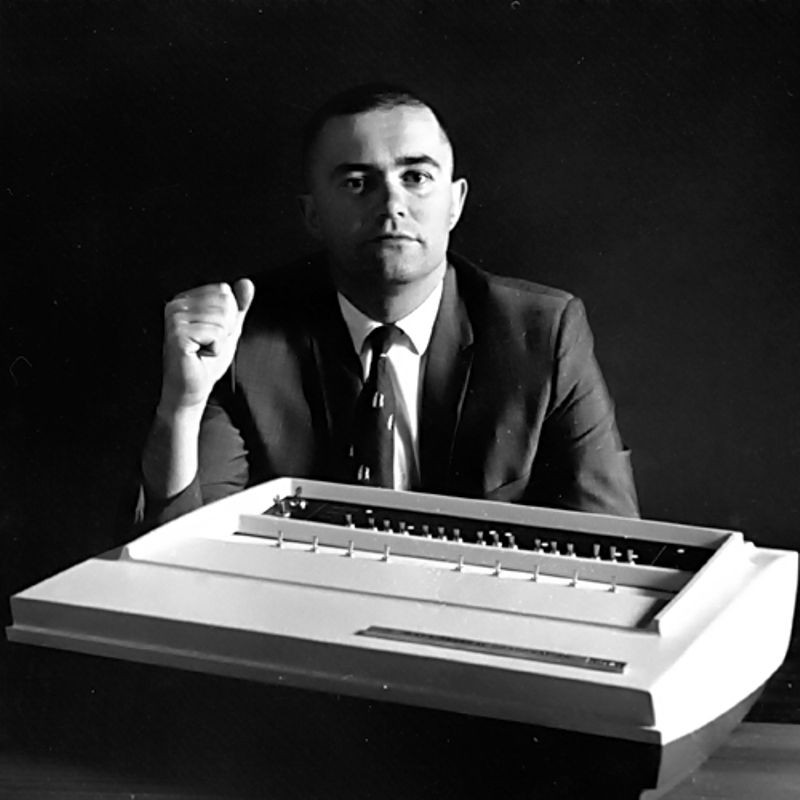
Edson deCastro with a Data General Nova
Data General Corporation introduces the Nova Minicomputer
Started by a group of engineers that left Digital Equipment Corporation (DEC), Data General designs the Nova minicomputer. It had 32 KB of memory and sold for $8,000. Ed de Castro, its main designer and co-founder of Data General, had earlier led the team that created the DEC PDP-8. The Nova line of computers continued through the 1970s, and influenced later systems like the Xerox Alto and Apple 1.
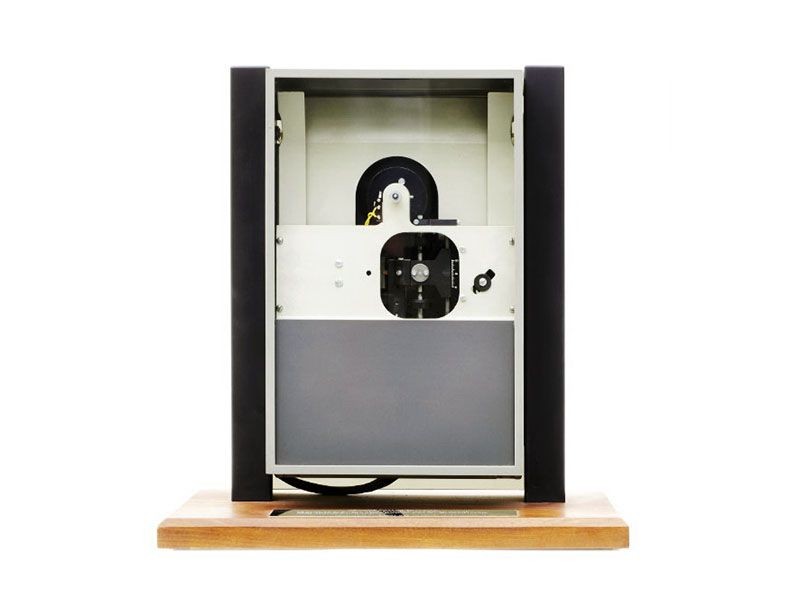
IBM “Minnow” floppy disk drive
IBM “Minnow” floppy disk drive
At IBM, development begins on the Minnow, a read-only floppy disk drive designed to load microcode into the controller for the “Merlin” (IBM 3330) Direct Access Storage Facility. The outcome of the work was a read-only, 8-inch, 80 kilobyte floppy disk and disk drive—the world’s first. Released as the IBM 23FD in 1971, it was used with the System 370 among other computers. Unlike hard drives, a user could easily transfer a floppy in its protective jacket from one drive to another. It was not until 1973 that IBM released a read/write floppy disk drive. Soon after, it became an industry standard.
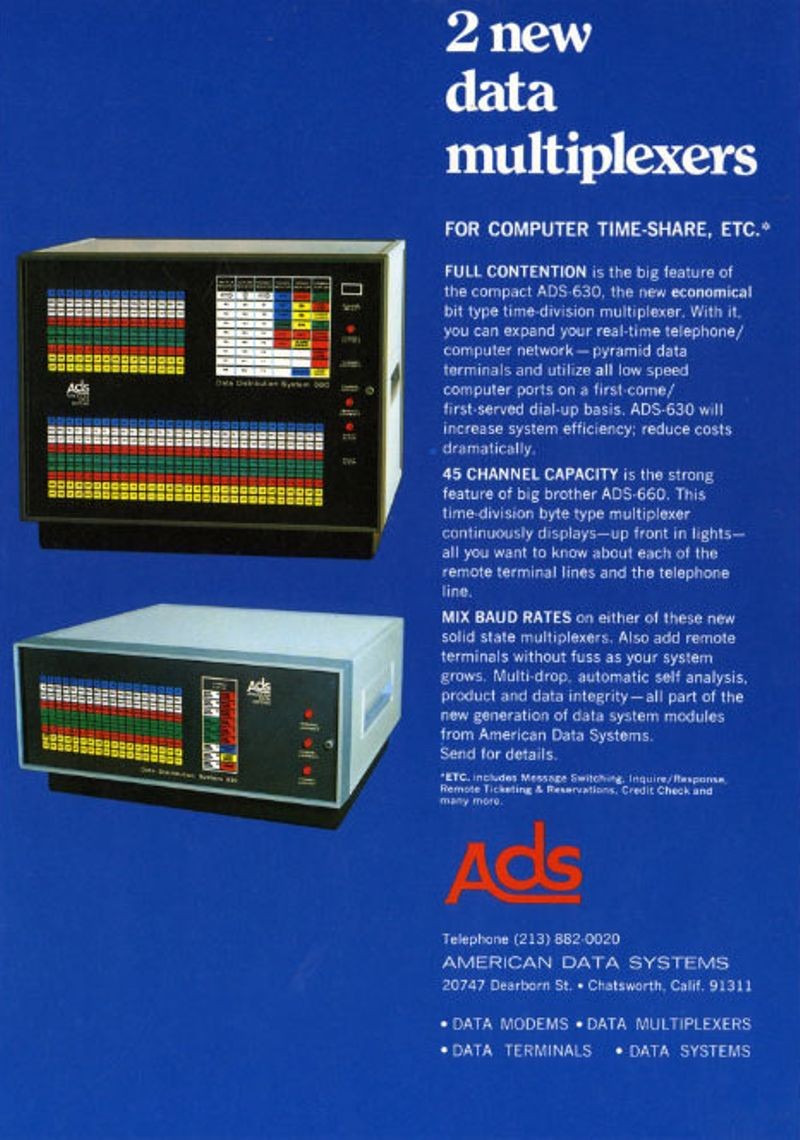
ADS multiplexers advertisement
Multiplexers: Cramming More Users onto the Same Line
Since telegraph days, people have been refining techniques for squeezing more connections onto a single wire. Early multiplexers for computers let up to 15 terminals share the same line, by assigning each of them a particular frequency (Frequency Division Multiplexing). In 1968, a new generation of time-division multiplexers gives each user a small slice of time in turn, radically expanding the number of computer terminals that can share the same line – from 15 to 45. This dramatically lowers costs for businesses, and the multiplexer market becomes highly competitive. Advances in acoustic couplers – the devices that let you connect your terminal to a regular telephone handset – also help more and more people go online.
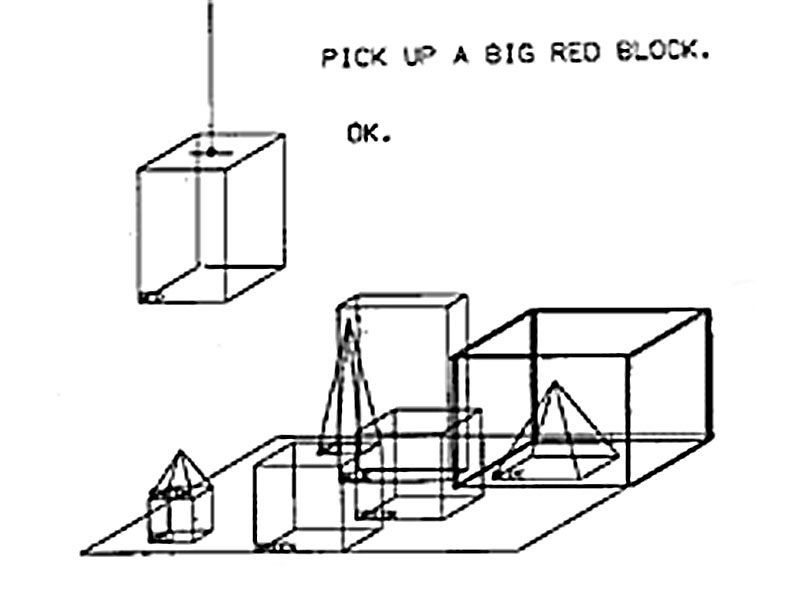
SHRDLU original screen display
SHRDLU natural language
Terry Winograd begins work on his PhD thesis at MIT. His thesis focused on SHRDLU, a natural language used in artificial intelligence research. While precursor programs like ELIZA were incapable of truly understanding English commands and responding appropriately, SHRDLU was able to combine syntax, meaning and deductive reasoning to accomplish this. SHRDLU’s universe was also very simple, and commands consisted of picking up and moving blocks, cones and pyramids of various shapes and colors.

Hardware wizard Bill English with setups for NLS
The Mother of All Demos
Douglas Engelbart and his team at SRI, with funding from ARPA, unveil their experimental ‘oNline System’ at a computing conference in San Francisco in what will become known as the ‘mother of all demos.’
For ninety minutes, the stunned audience of around a thousand witnesses collaborative editing, videoconferencing, word processing, and a strange pointing device jokingly referred to as a “mouse.” Every paragraph or other element in the NLS system can be linked to other elements using hypertext links.
Across the country, visionary Ted Nelson is working with Andy van Dam to create another early hypertext system, HES (Hypertext Editing System).
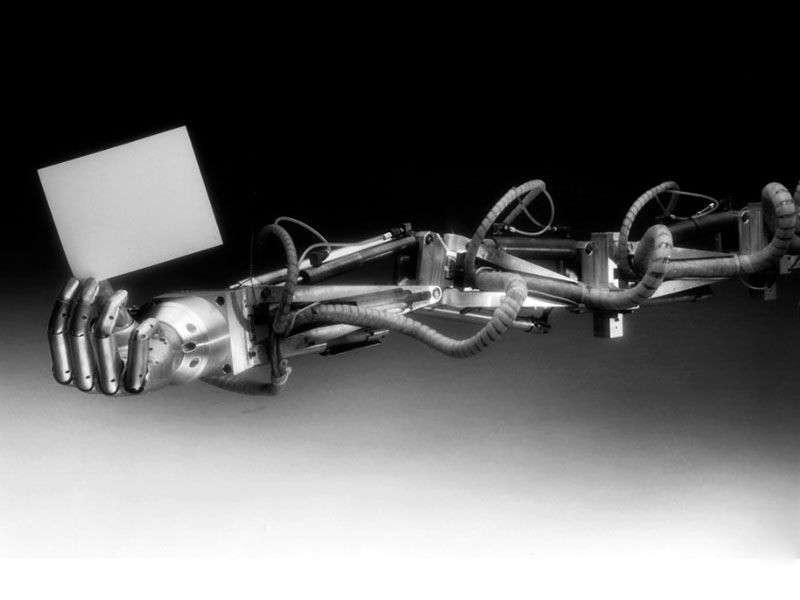
Minsky’s Tentacle Arm
The Tentacle Arm
Marvin Minsky develops the Tentacle Arm robot, which moves like an octopus. It has twelve joints designed to reach around obstacles. A DEC PDP-6 computer controls the arm, powered by hydraulic fluids. Mounted on a wall, it could lift the weight of a person.
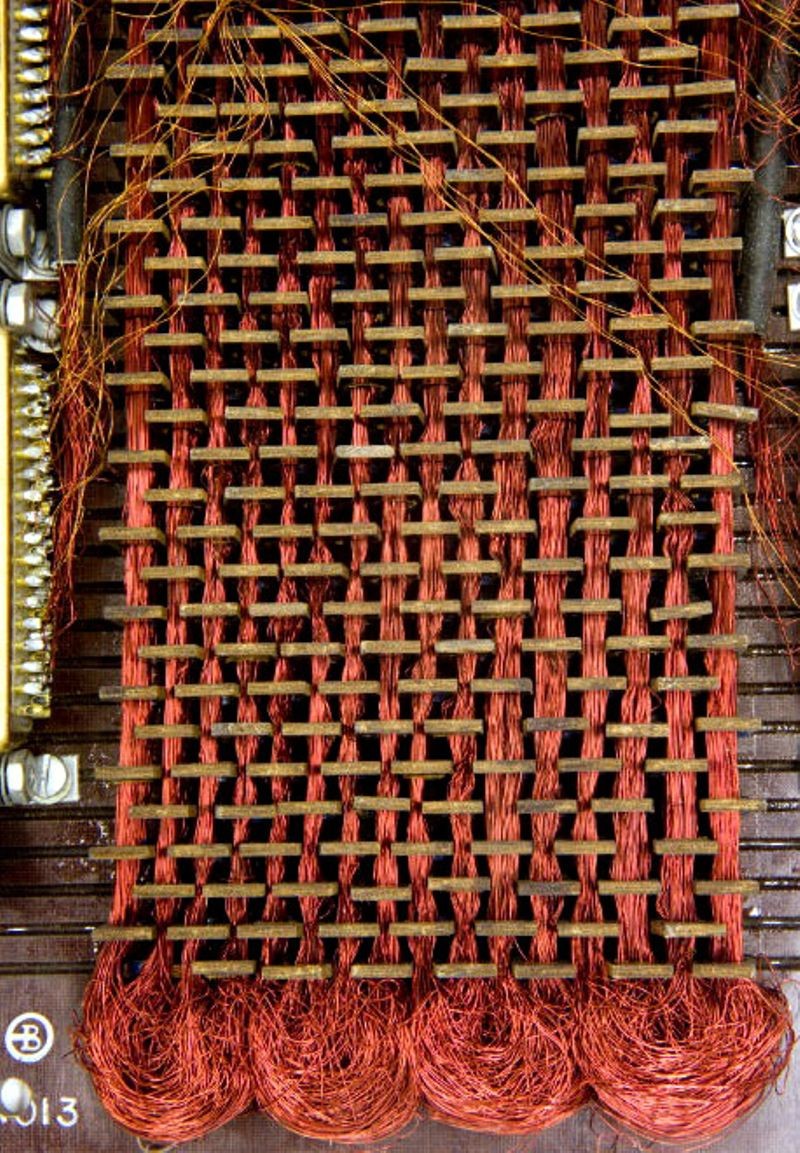
Close up shot of Apollo Guidance Computer read-only rope memory
Apollo Guidance Computer read-only rope memory
Apollo Guidance Computer read-only rope memory is launched into space aboard the Apollo 11 mission, which carried American astronauts to the Moon and back. This rope memory was made by hand, and was equivalent to 72 KB of storage. Manufacturing rope memory was laborious and slow, and it could take months to weave a program into the rope memory. If a wire went through one of the circular cores it represented a binary one, and those that went around a core represented a binary zero.
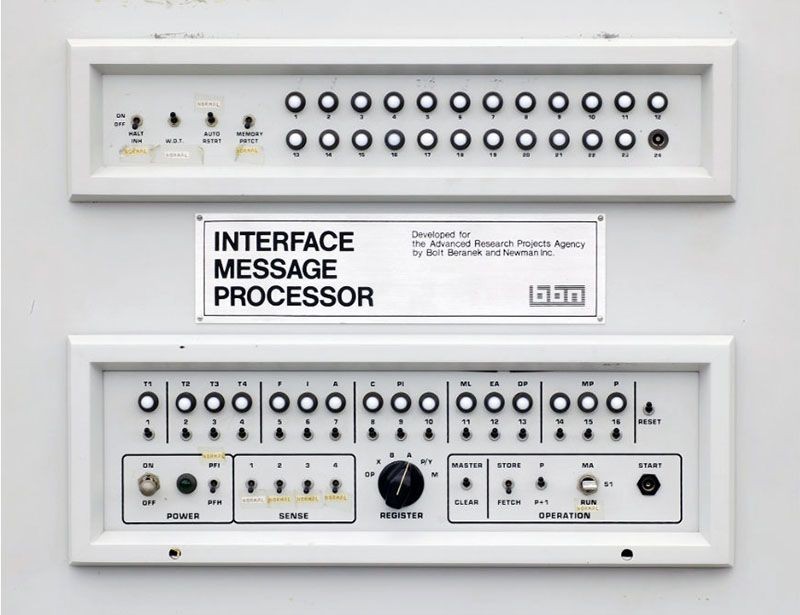
ARPAnet Interface Message Processor (IMP)
Hooking up – networks come online
Switched on in late October 1969, the ARPAnet is the first large-scale, general-purpose computer network to connect different kinds of computers together. But others come online within weeks or months. 1969-70 marks the start of Britain’s NPL network, the wireless and more specialized ALOHANET in Hawaii (also ARPA funded), and the HLN (High Level Network) for the SITA consortium of commercial airlines. Work begins on France’s CYCLADES network not long after. The ARPAnet’s massive funding will help it pull ahead of rivals.
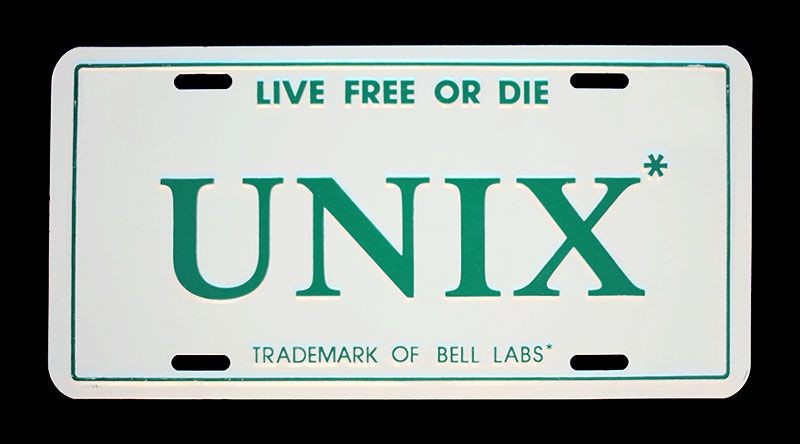
UNIX license plate
Kenneth Thompson and Dennis Ritchie develop UNIX
AT&T Bell Labs programmers Kenneth Thompson and Dennis Ritchie develop the UNIX operating system on a spare DEC minicomputer. UNIX combined many of the timesharing and file management features offered by Multics, from which it took its name. (Multics, a project of the mid-1960s, represented one of the earliest efforts at creating a multi-user, multi-tasking operating system.) The UNIX operating system quickly secured a wide following, particularly among engineers and scientists, and today is the basis of much of our world’s computing infrastructure.
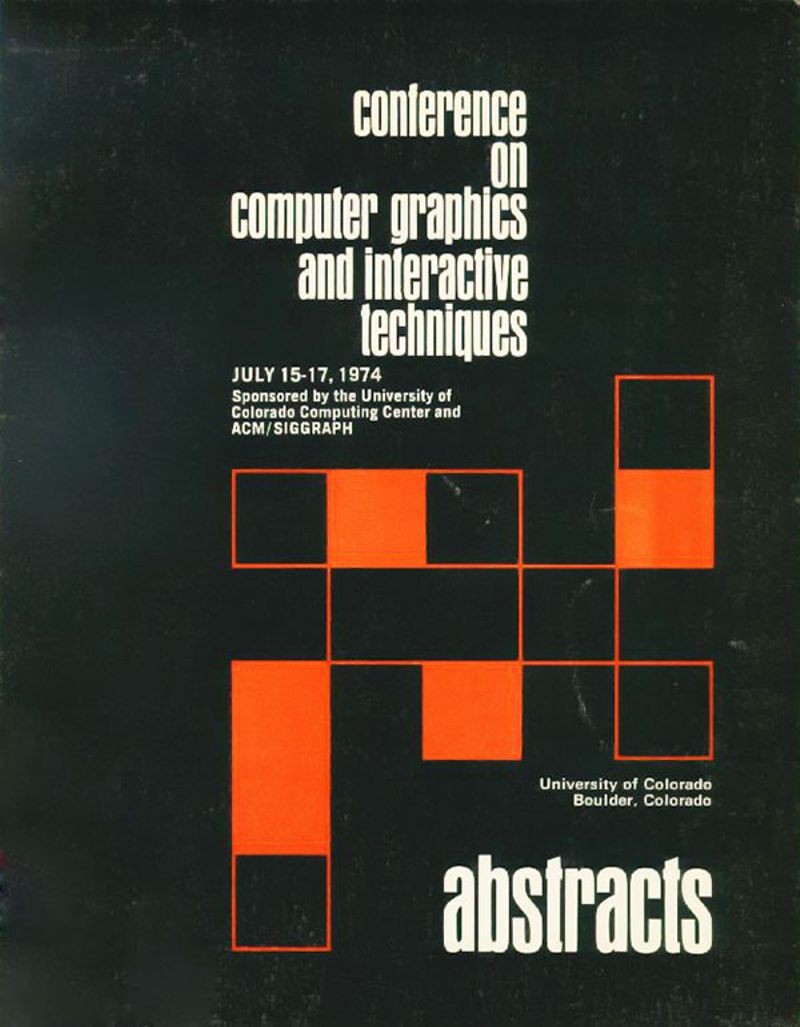
First SIGGRAPH Conference abstracts
SIGGRAPH is founded
Founded in 1969 by Andy Van Dam, the Association for Computer Machinery Special Interest Group on Computer Graphics (SIGGRAPH) has become one of the most influential groups in computing. Starting in 1974, the annual SIGGRAPH conference attracted graphics professionals and provided an important meeting ground for discussion and presentations on the state-of-the-art, with many companies and researchers debuting new releases or techniques. It continues to attract computer graphics professionals from around the world to its annual conference.
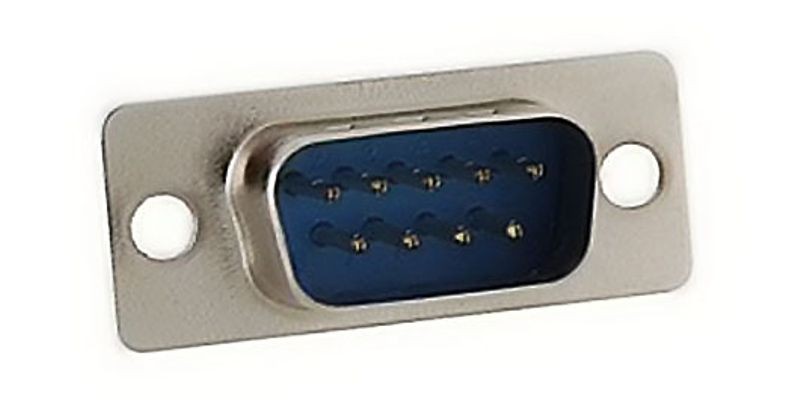
9-pin serial port connector
The RS-232-C standard is adopted
The RS-232-C standard for communications is adopted by the Electronic Industries Association. The standard permits computers and peripheral devices to transmit information serially — that is, one bit at a time. RS-232-C compatible ports were widely used for equipment like printers and modems. Compared to more modern interfaces, serial connections had slow transmission speeds, were bulky and have been largely replaced by USB ports on new PCs and peripheral equipment.
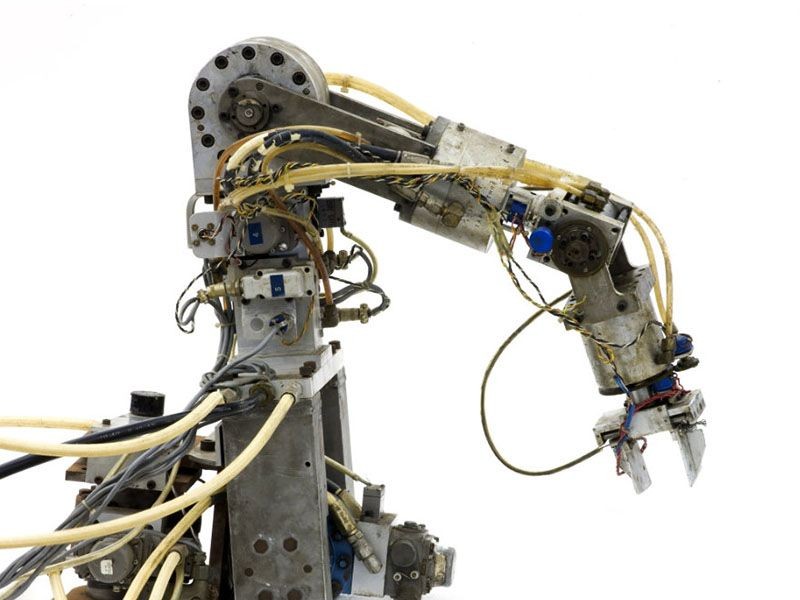
The Stanford Arm
Victor Scheinman´s Stanford Arm
Victor Scheinman´s Stanford Arm robot makes a breakthrough as the first successful electrically powered, computer-controlled robot arm. By 1974, the Stanford Arm could assemble a Ford Model T water pump, guiding itself with optical and contact sensors. The Stanford Arm led directly to commercial production. Scheinman then designed the PUMA series of industrial robots for Unimation, robots used for automobile assembly and other industrial tasks.

